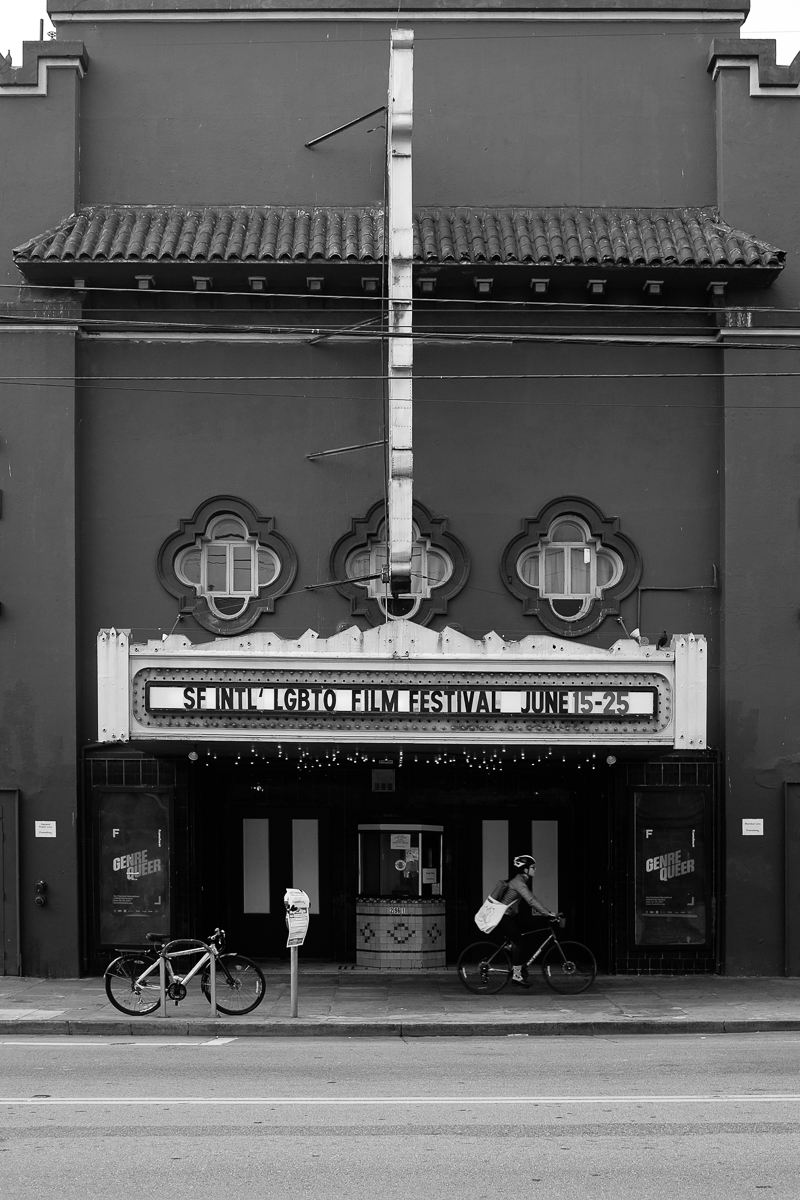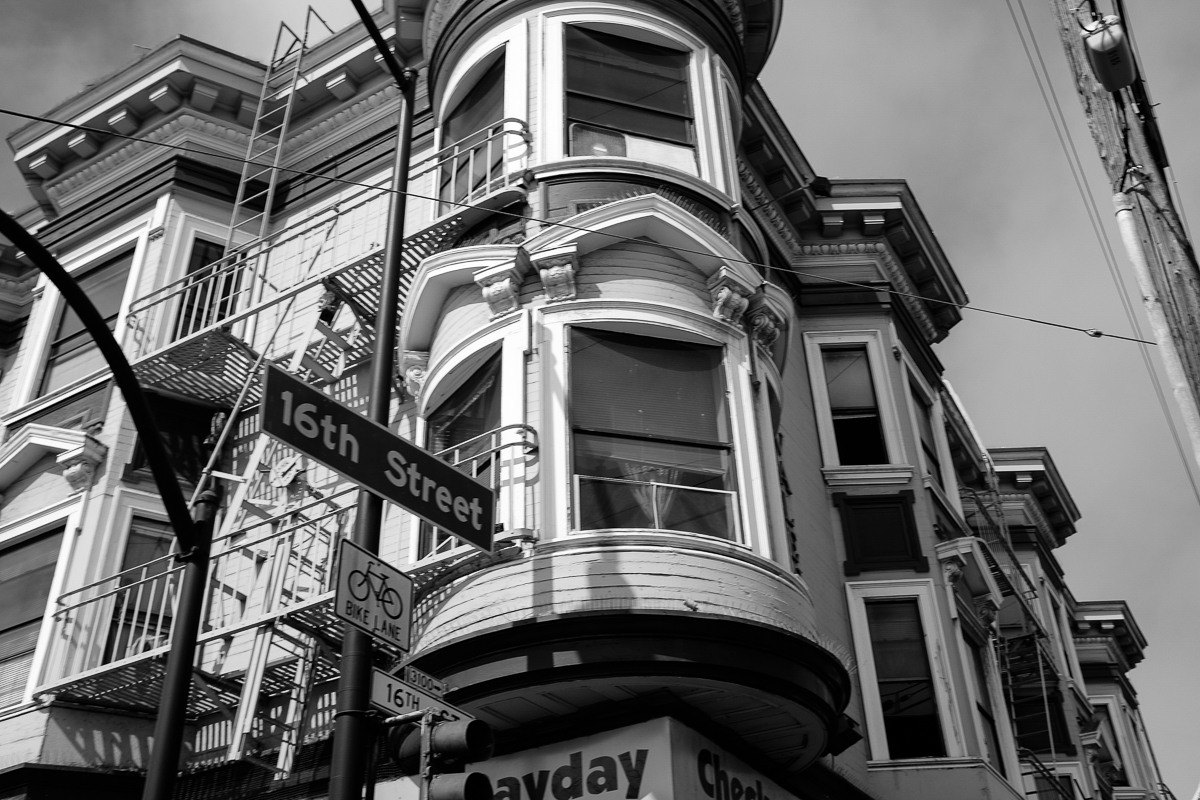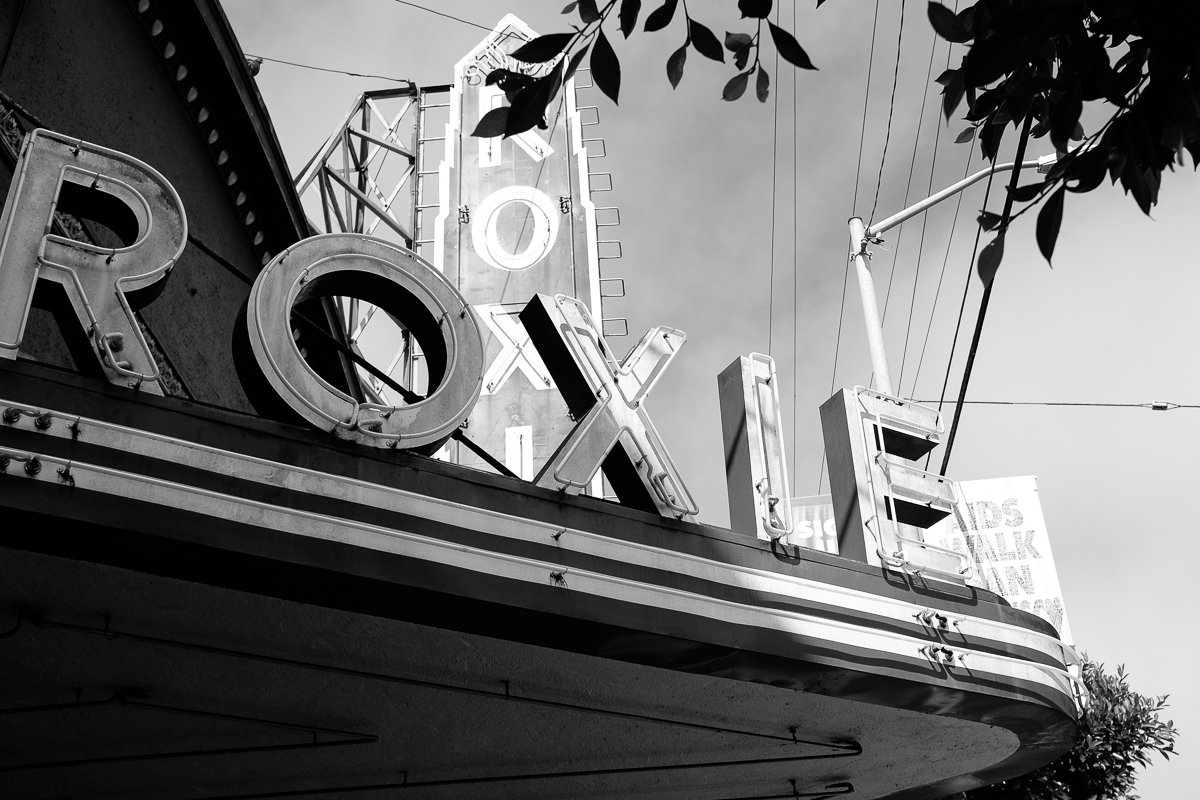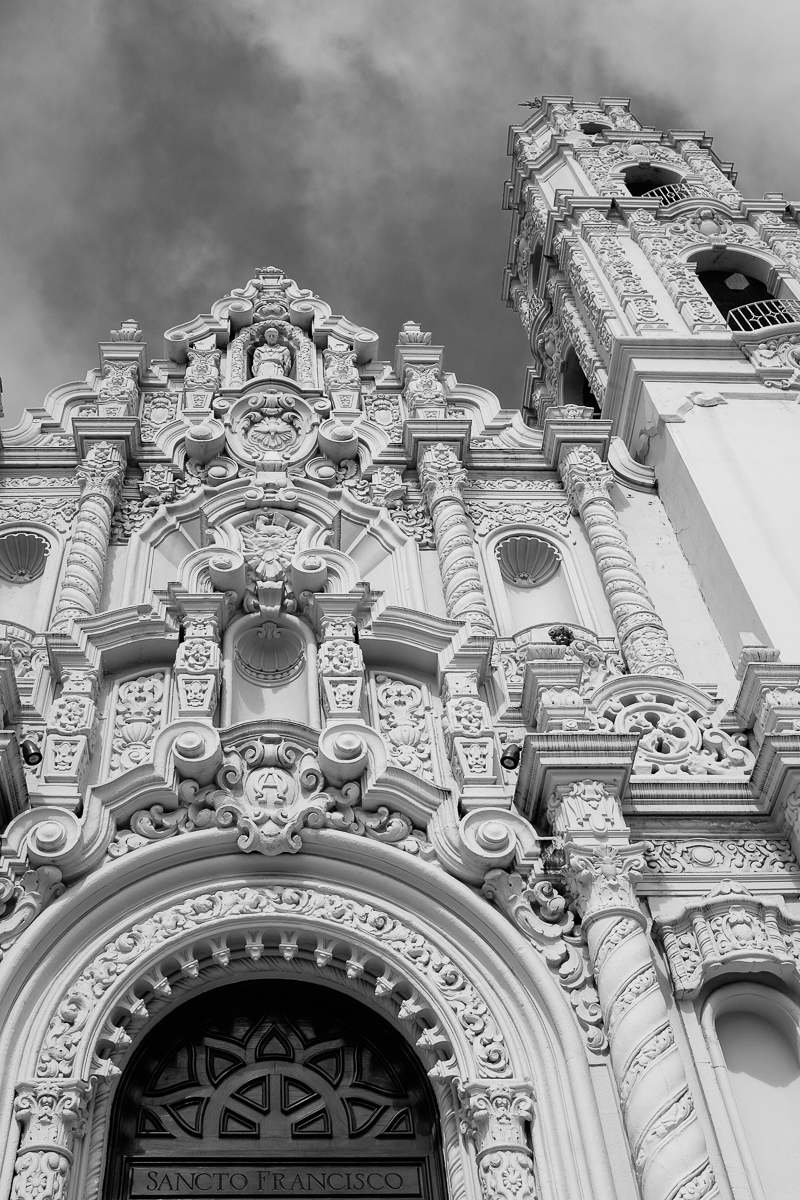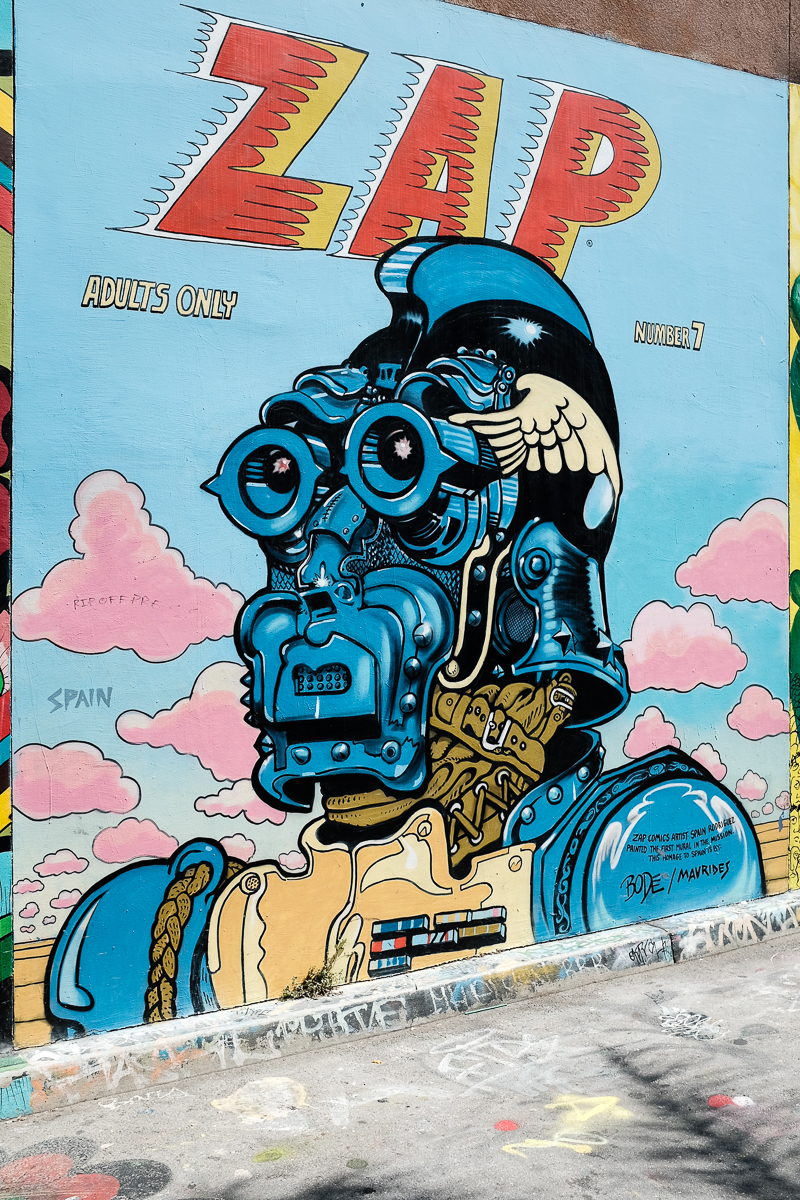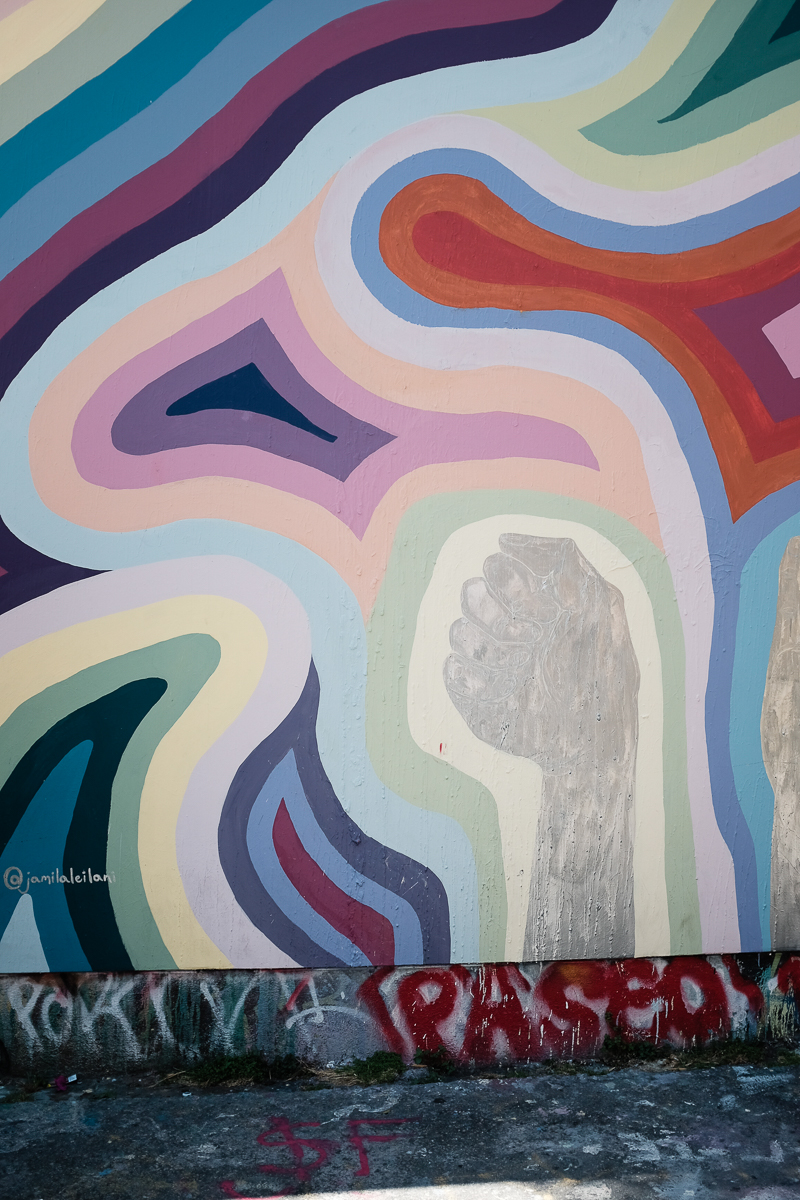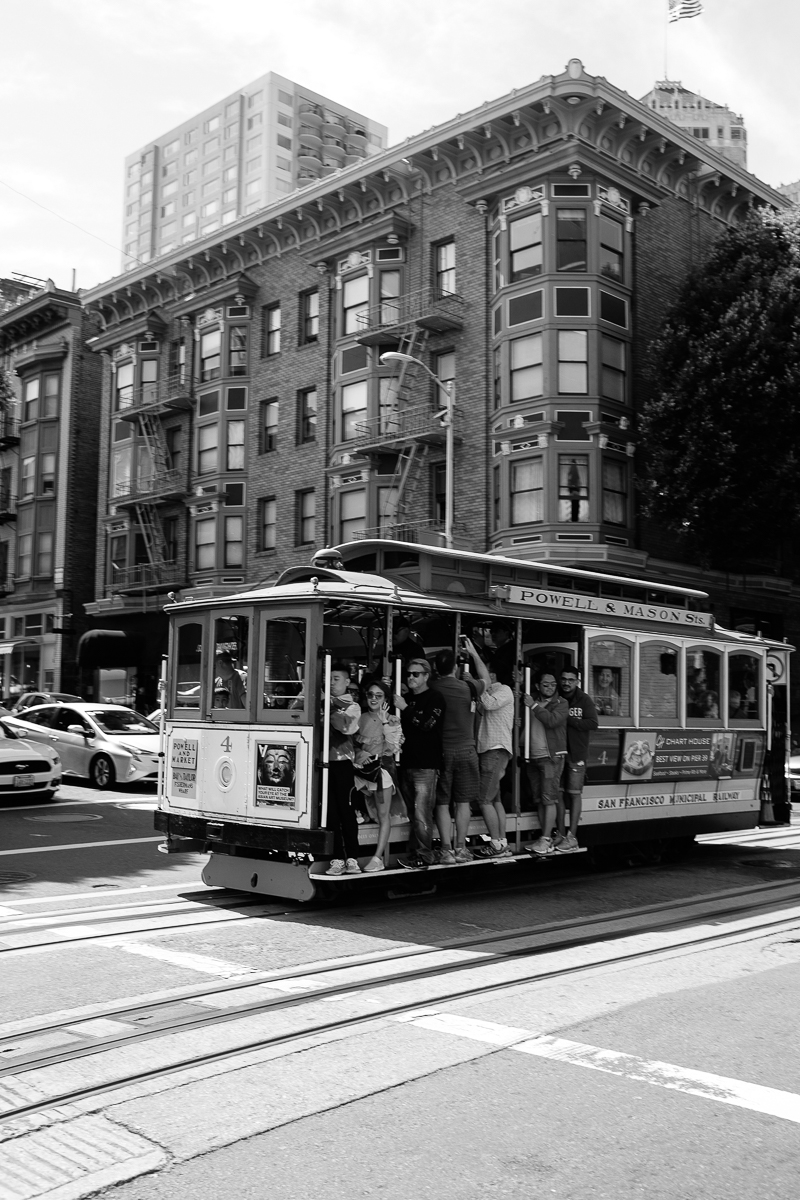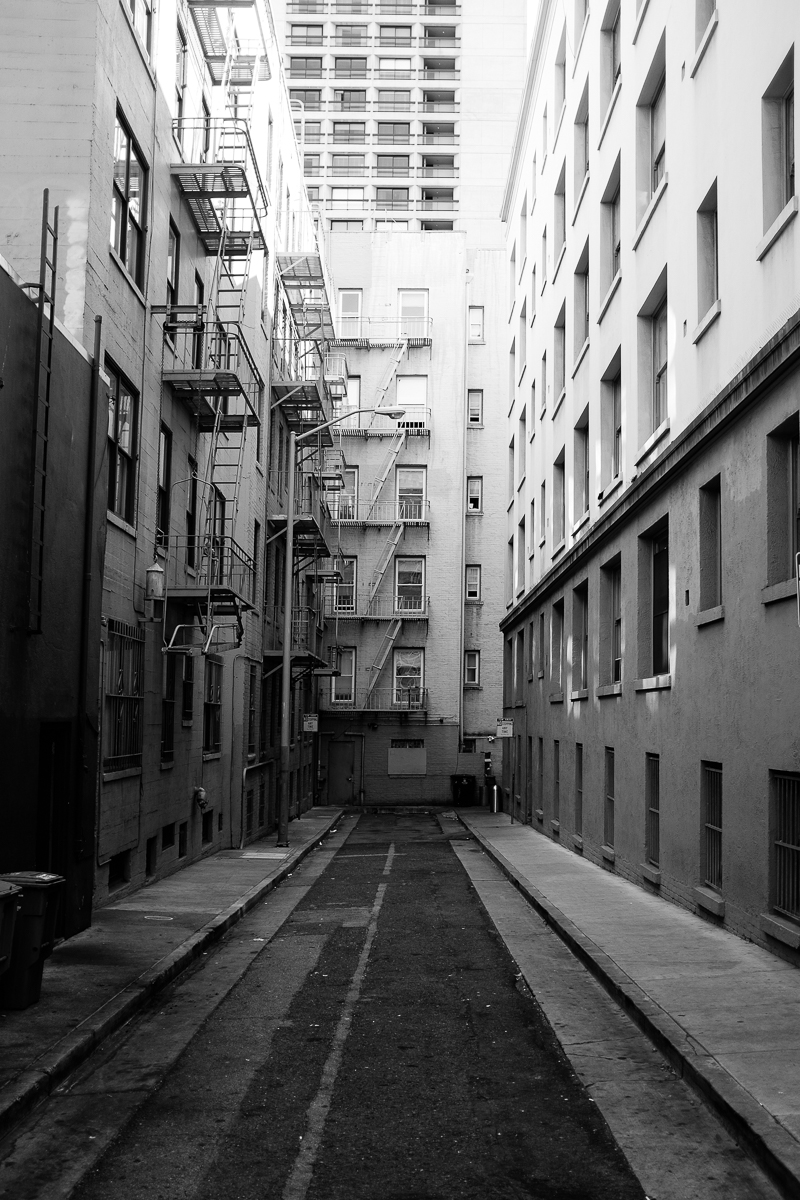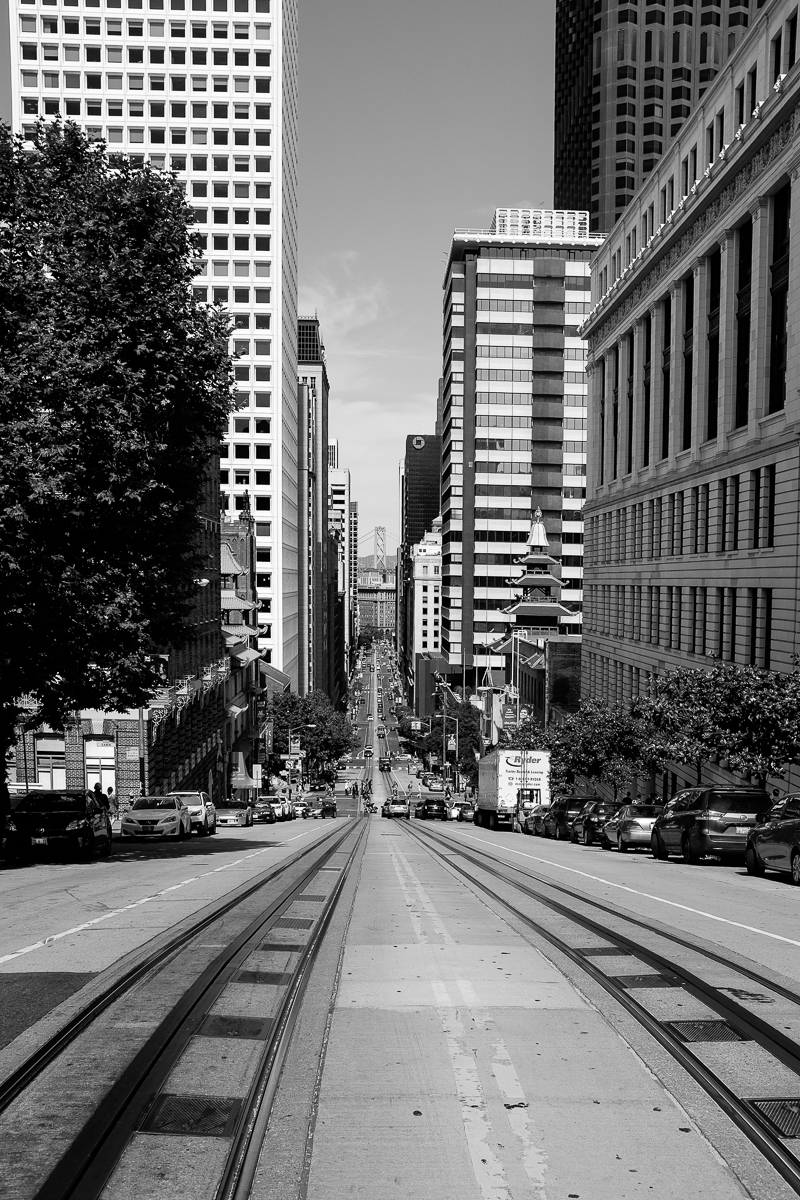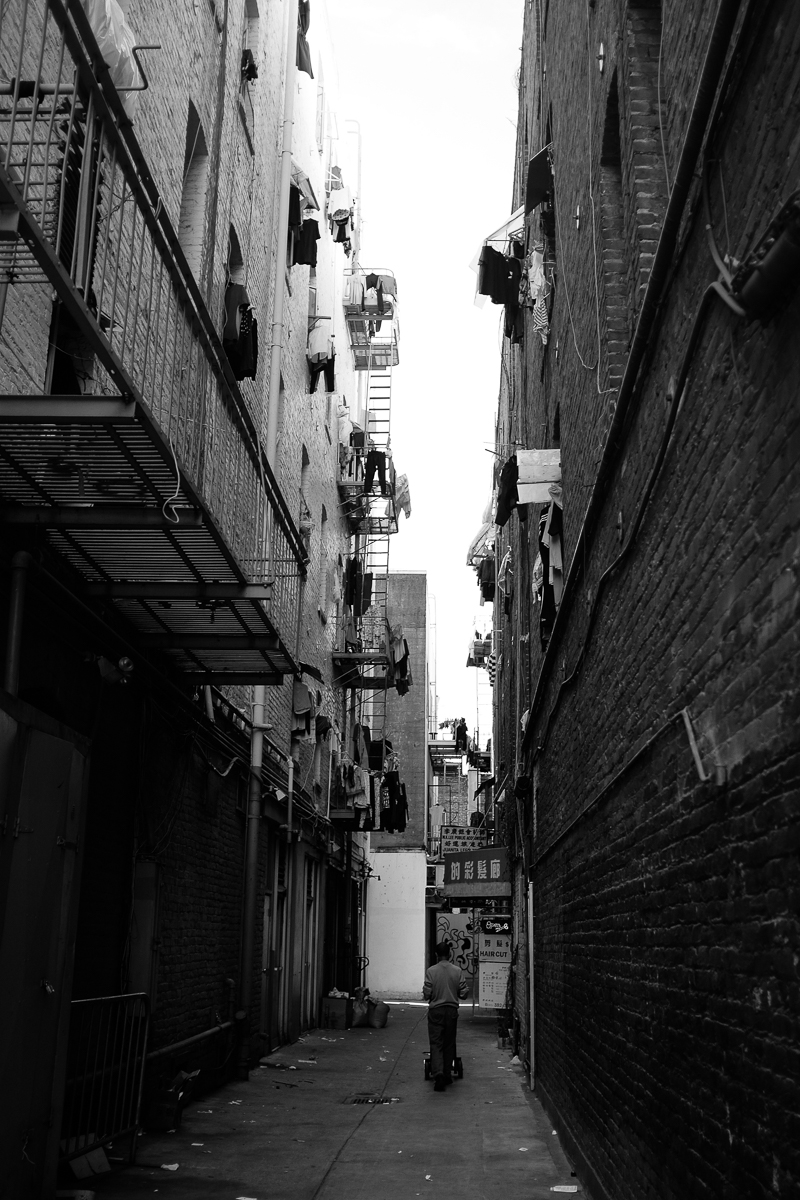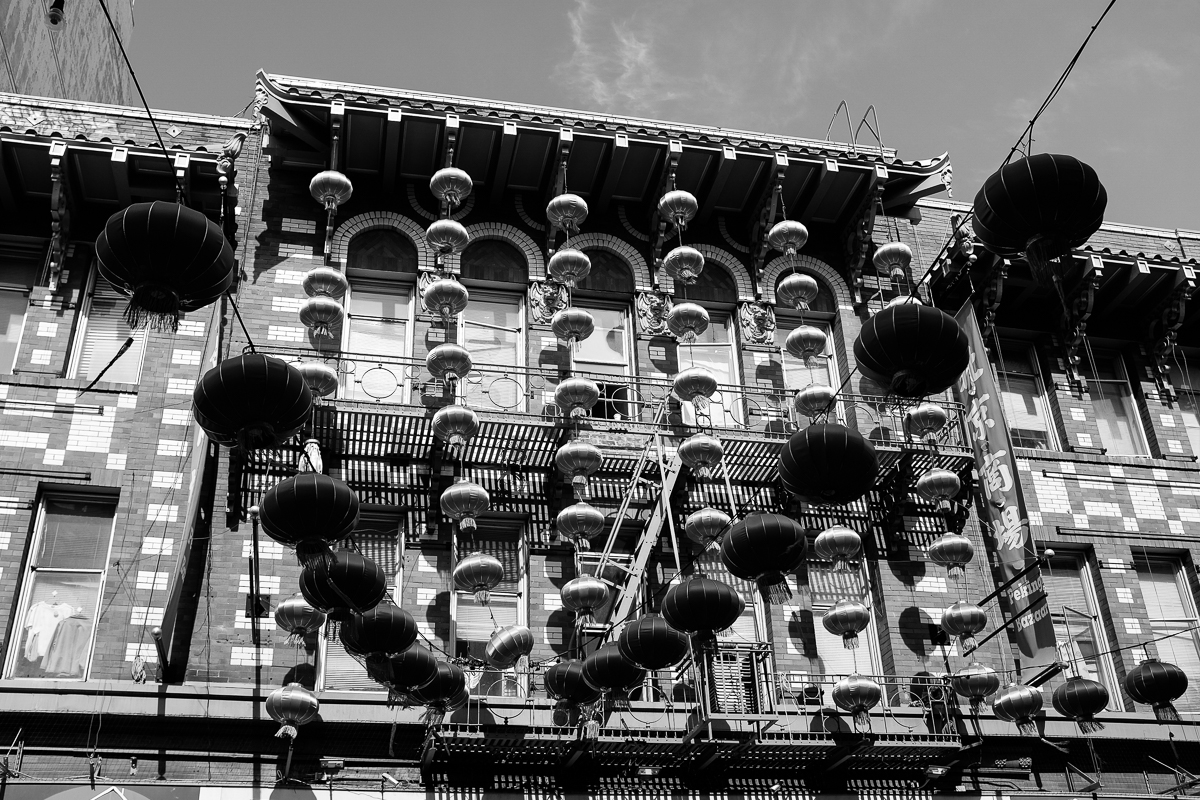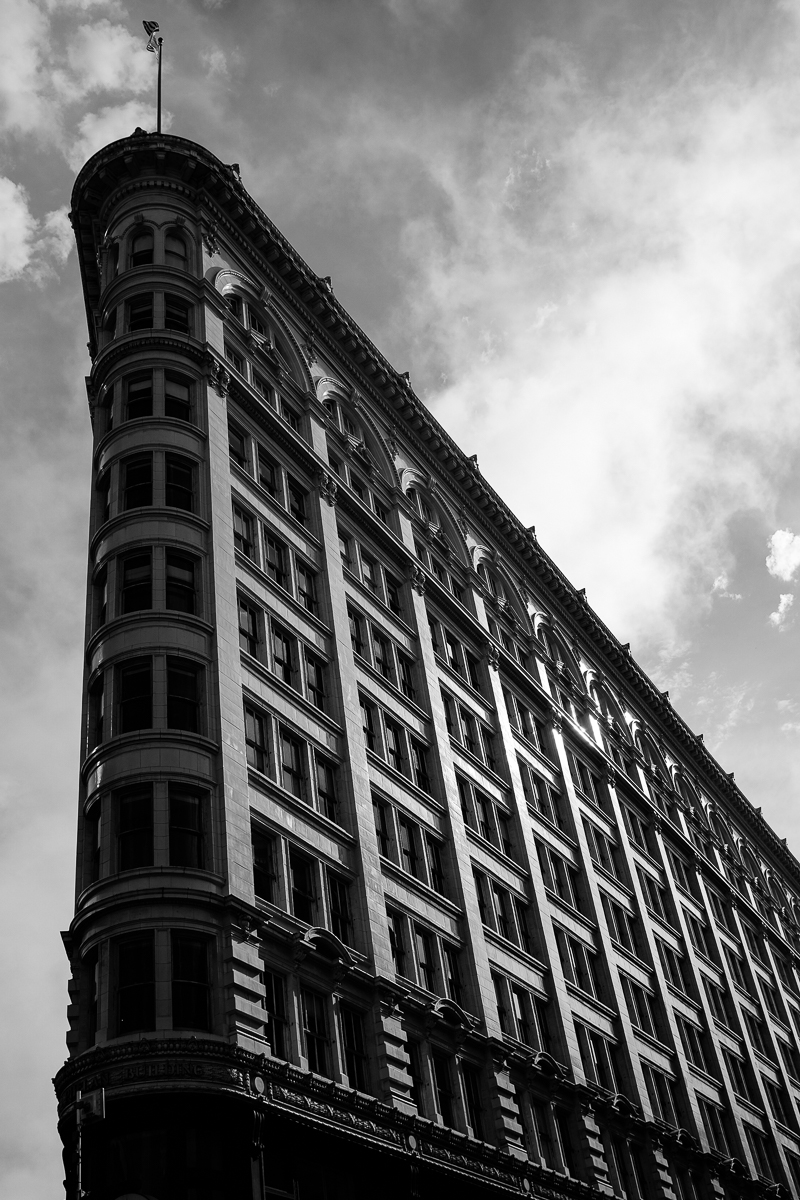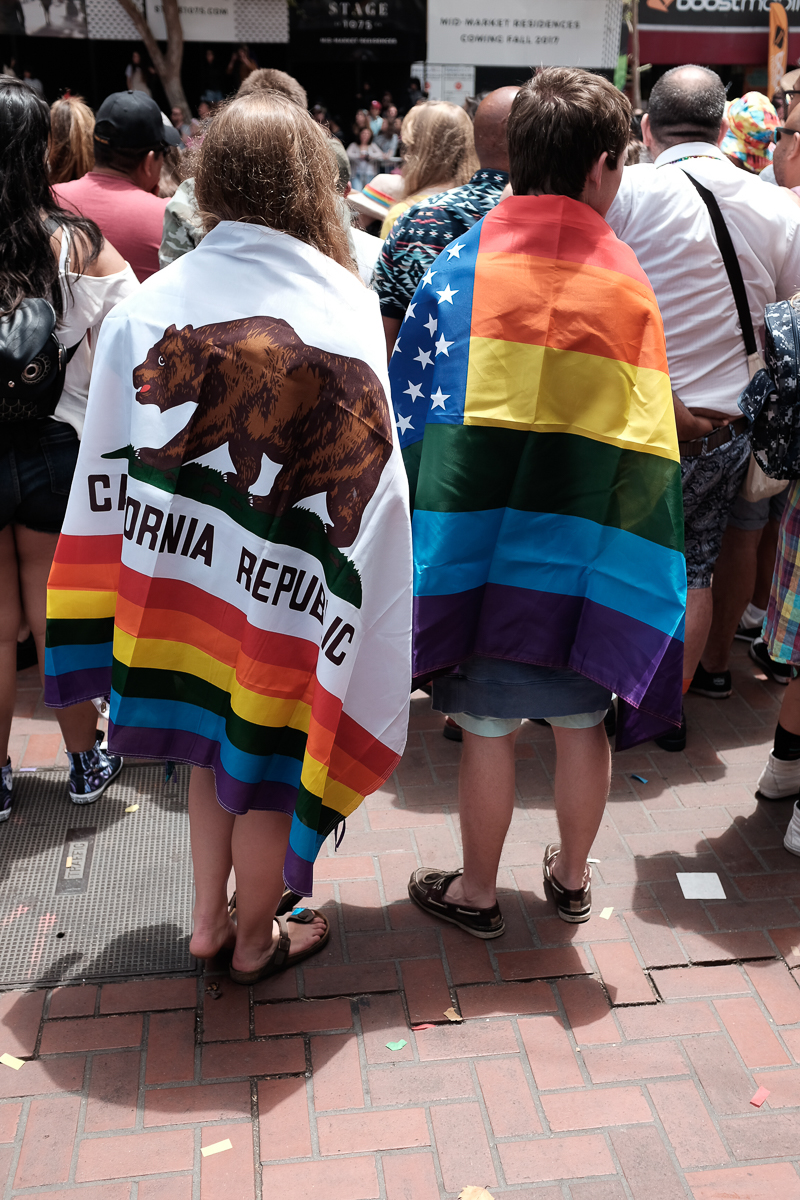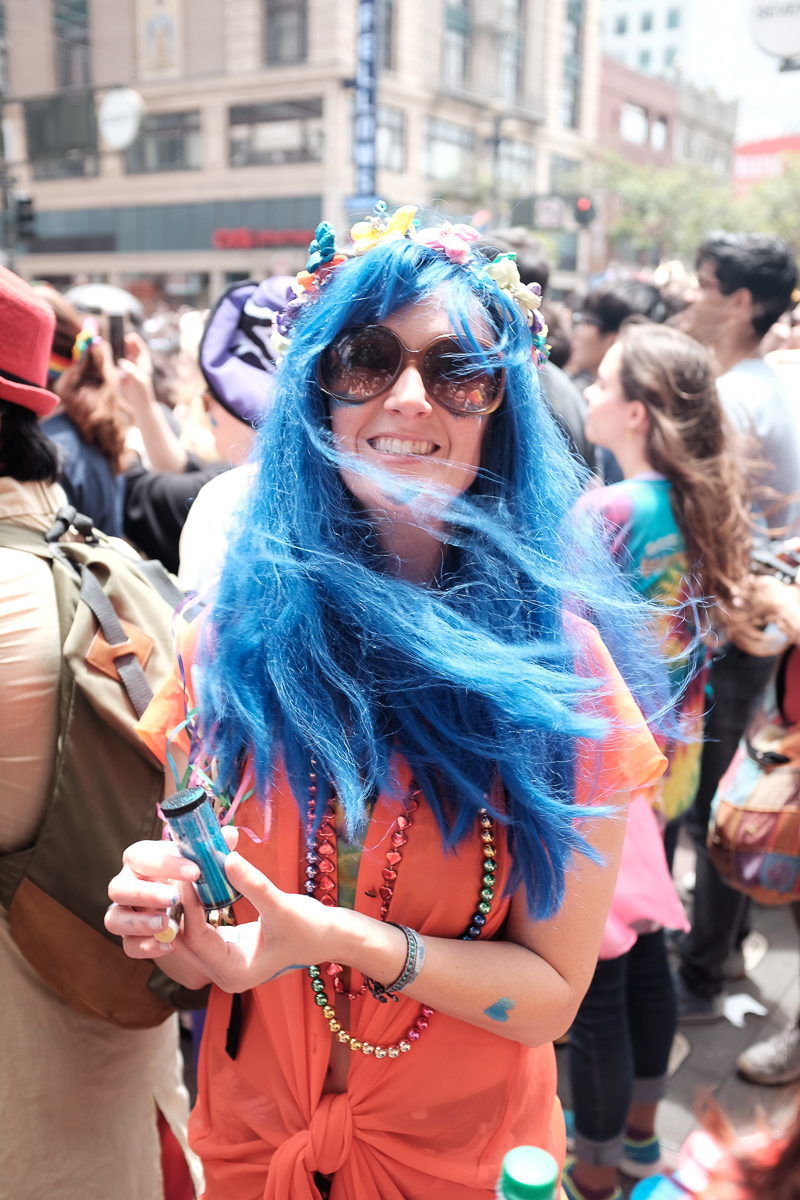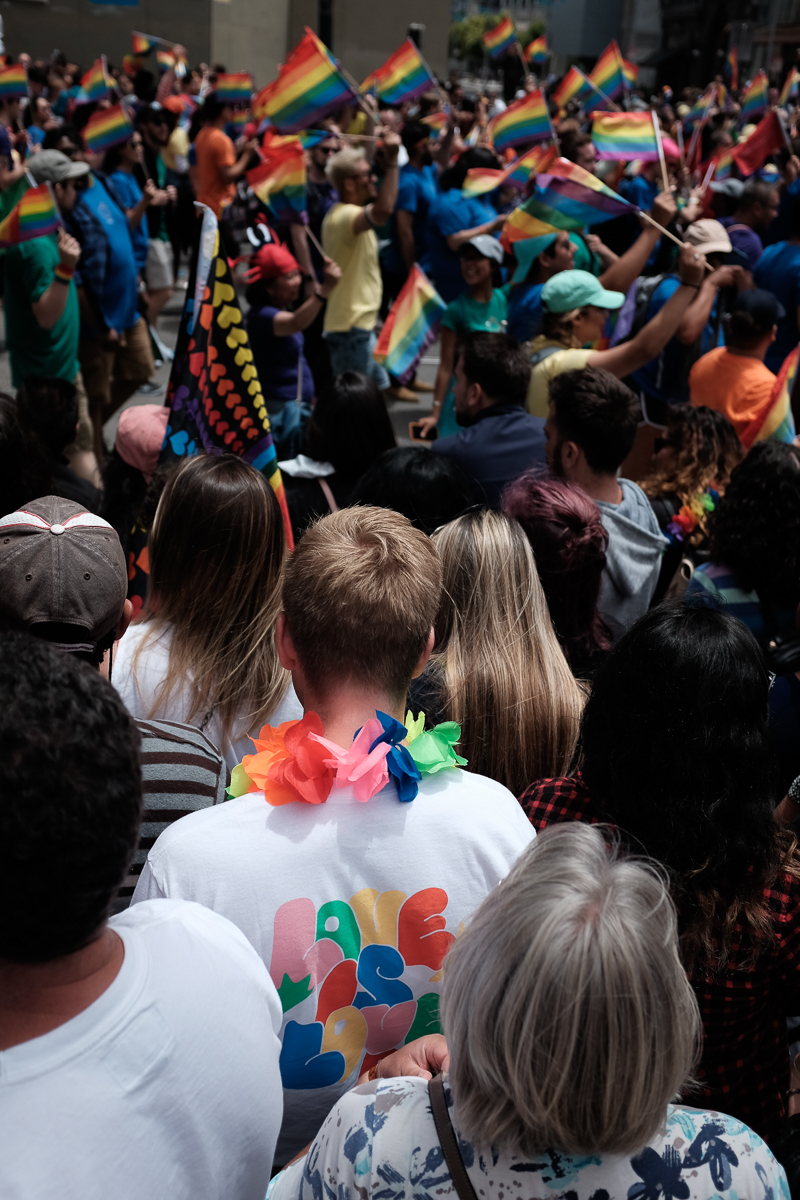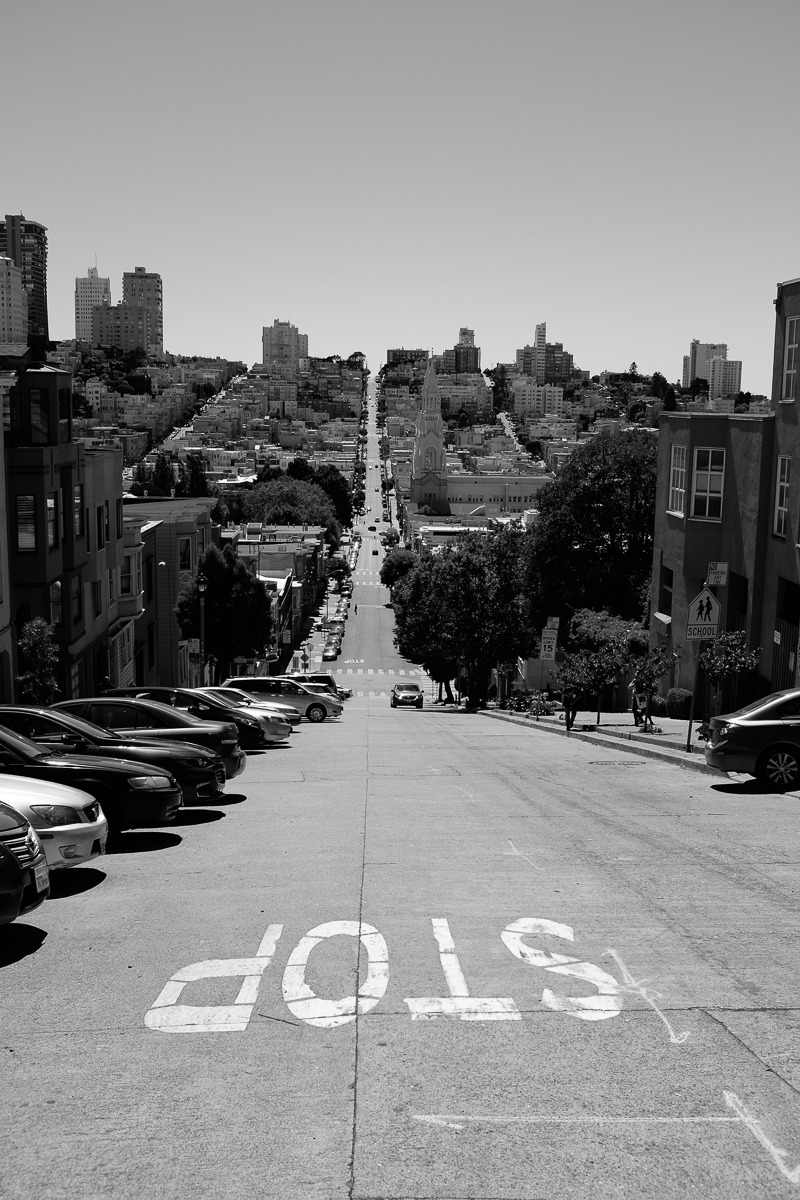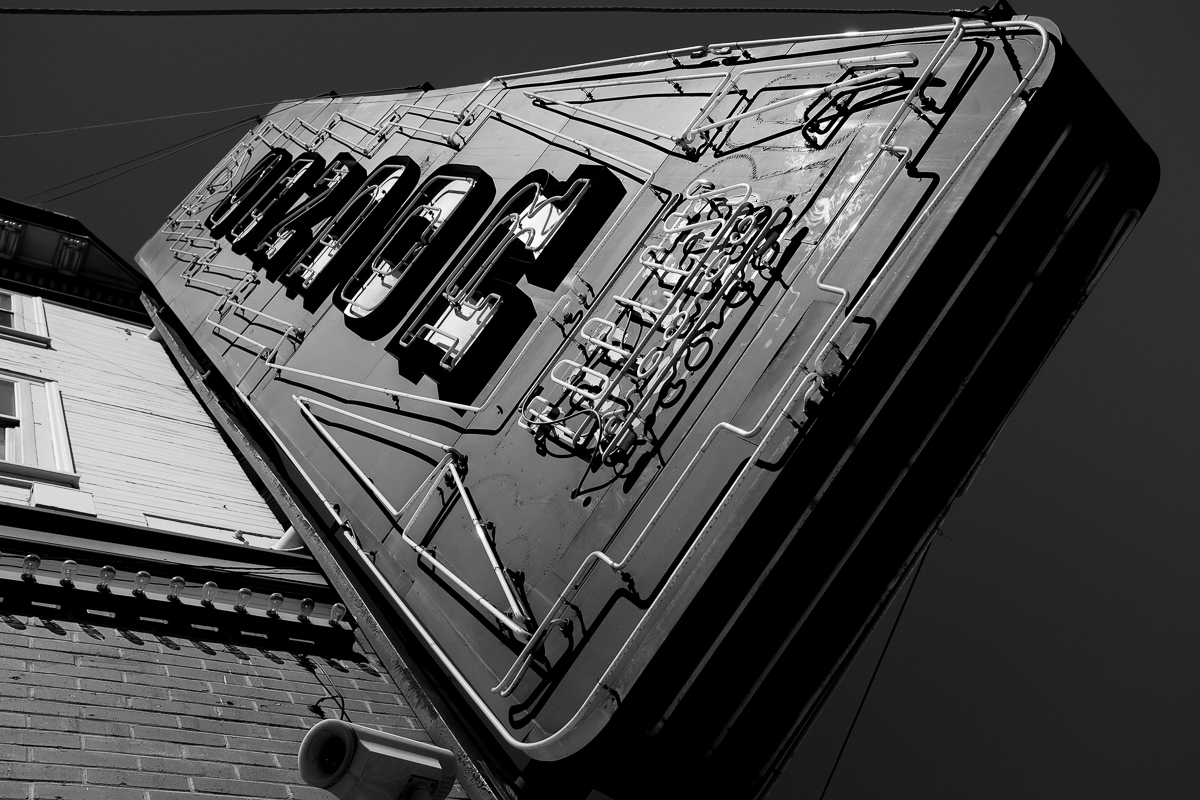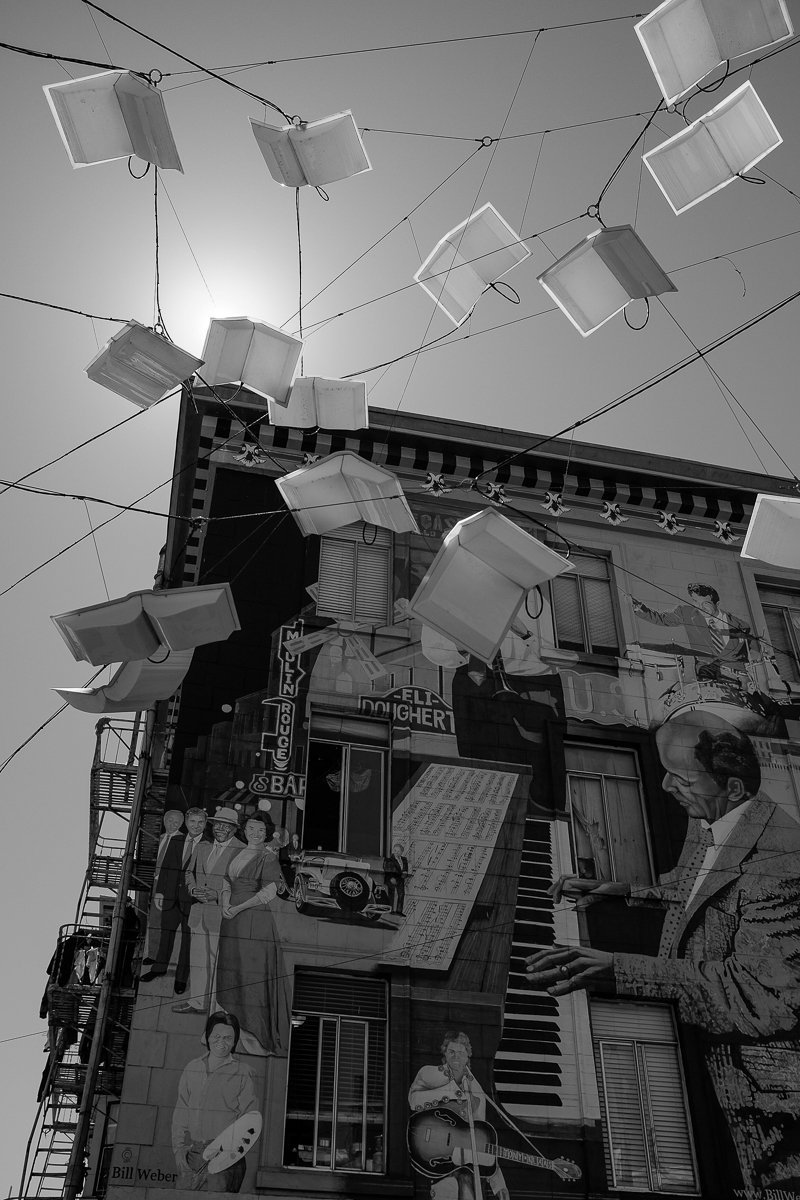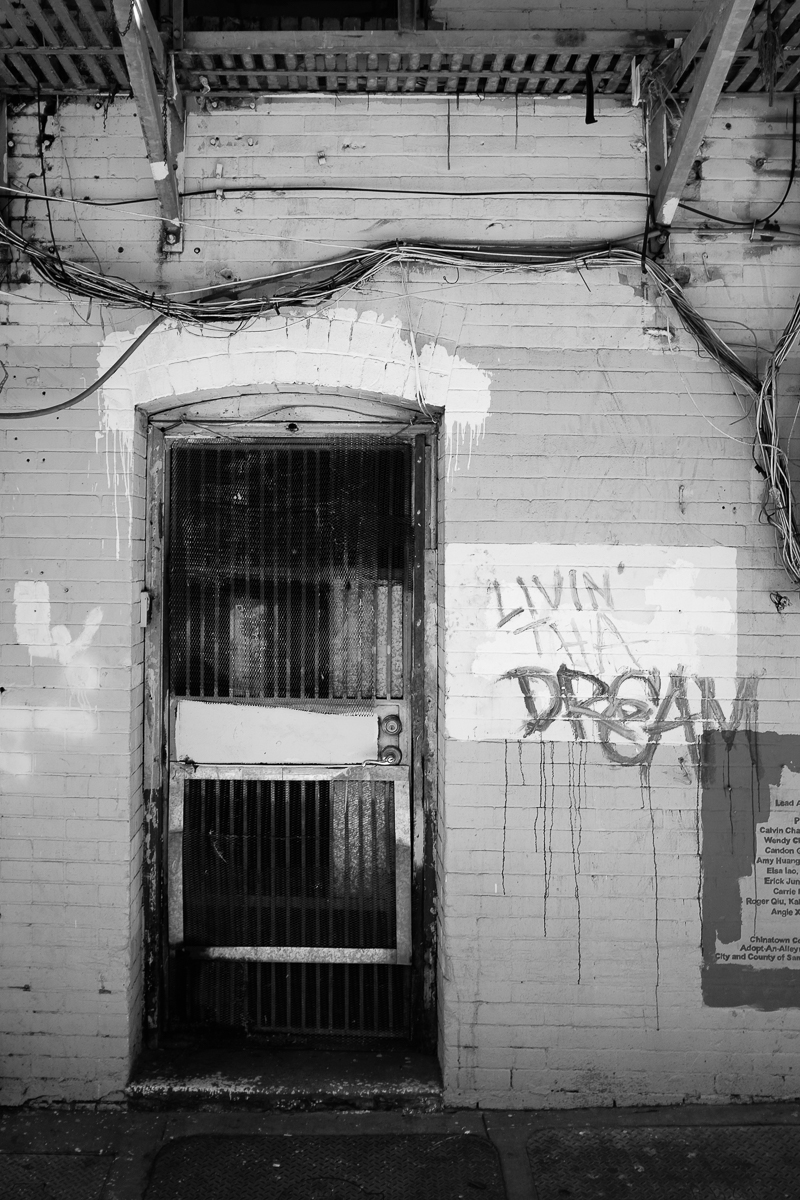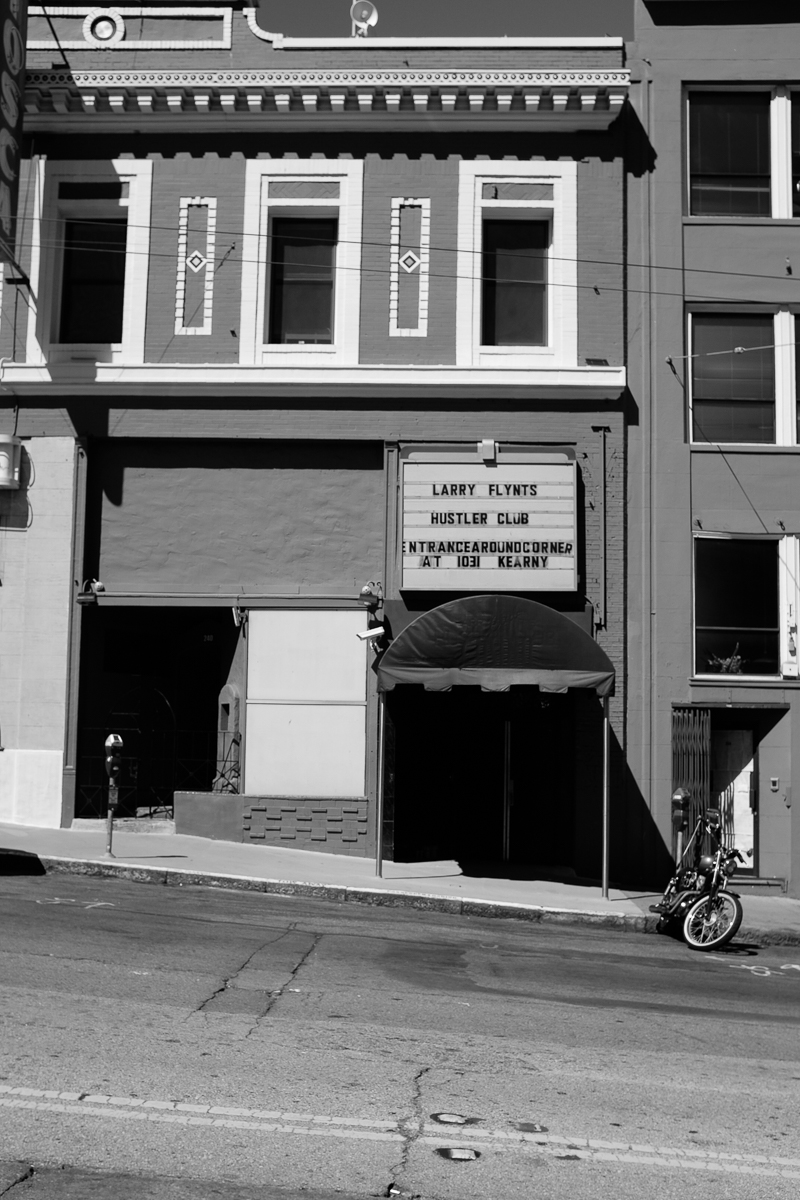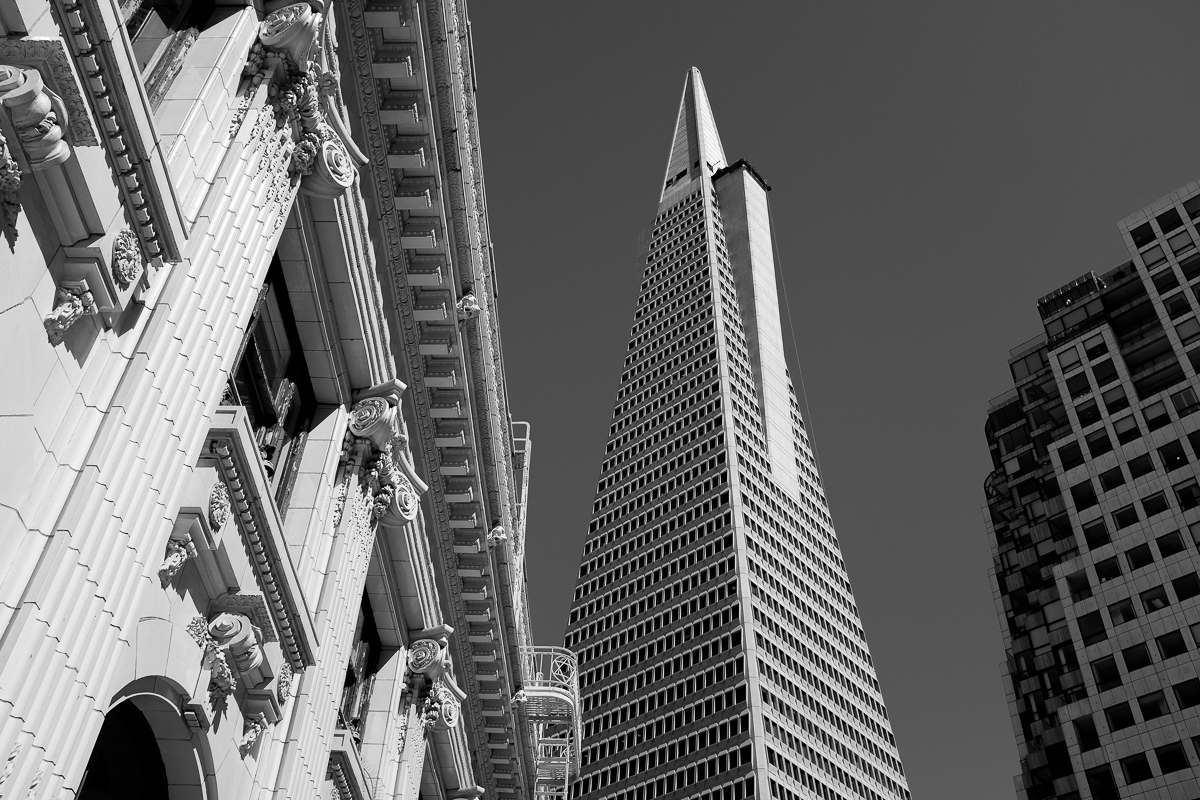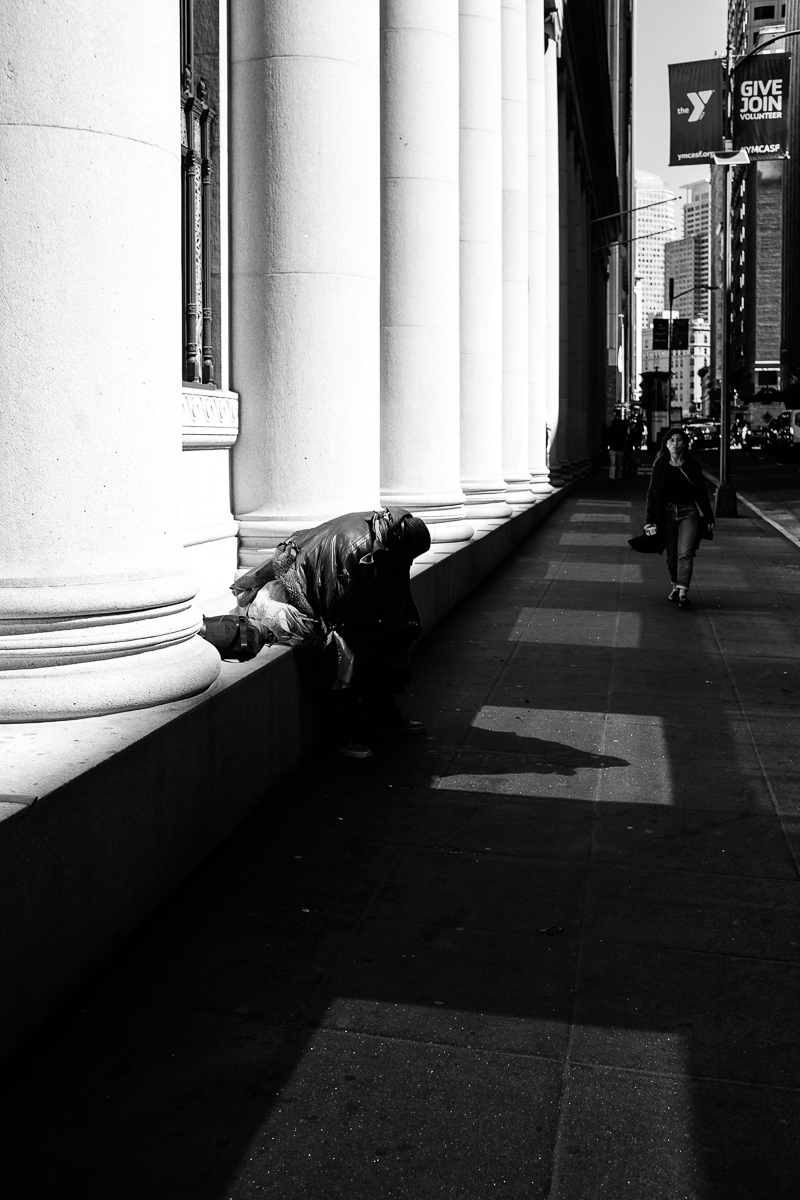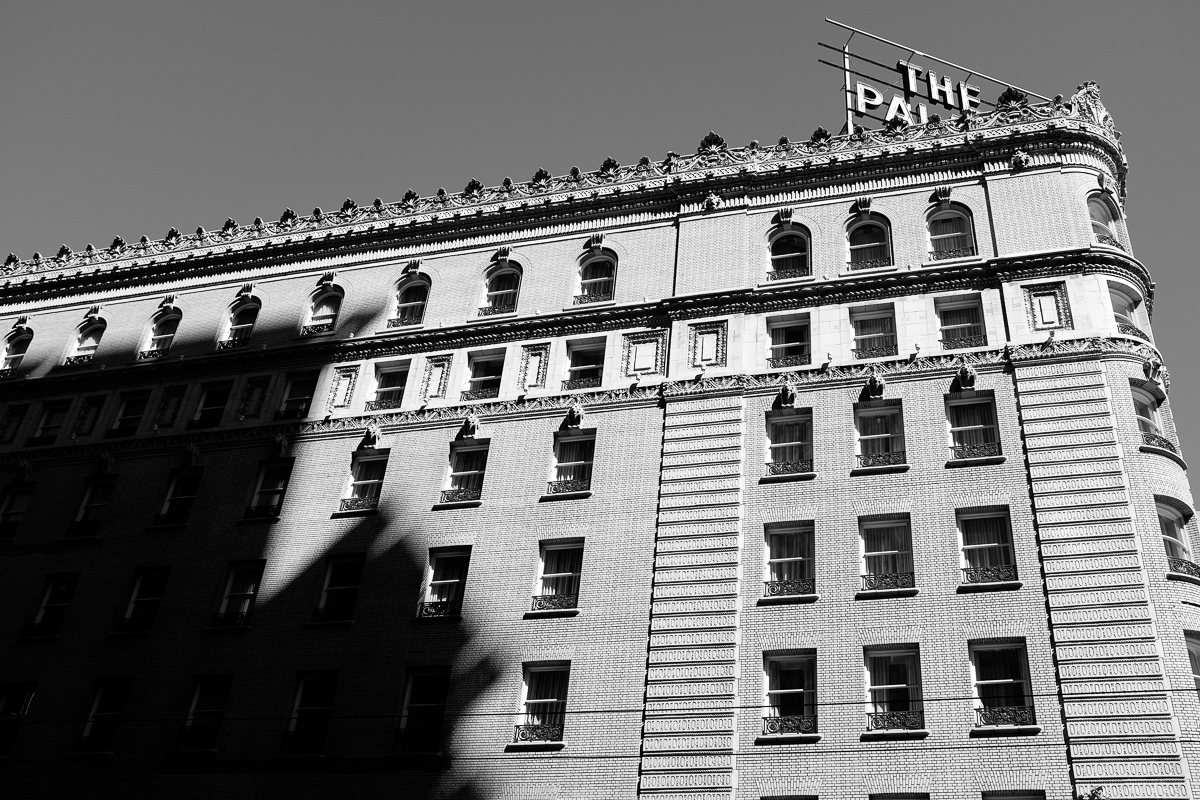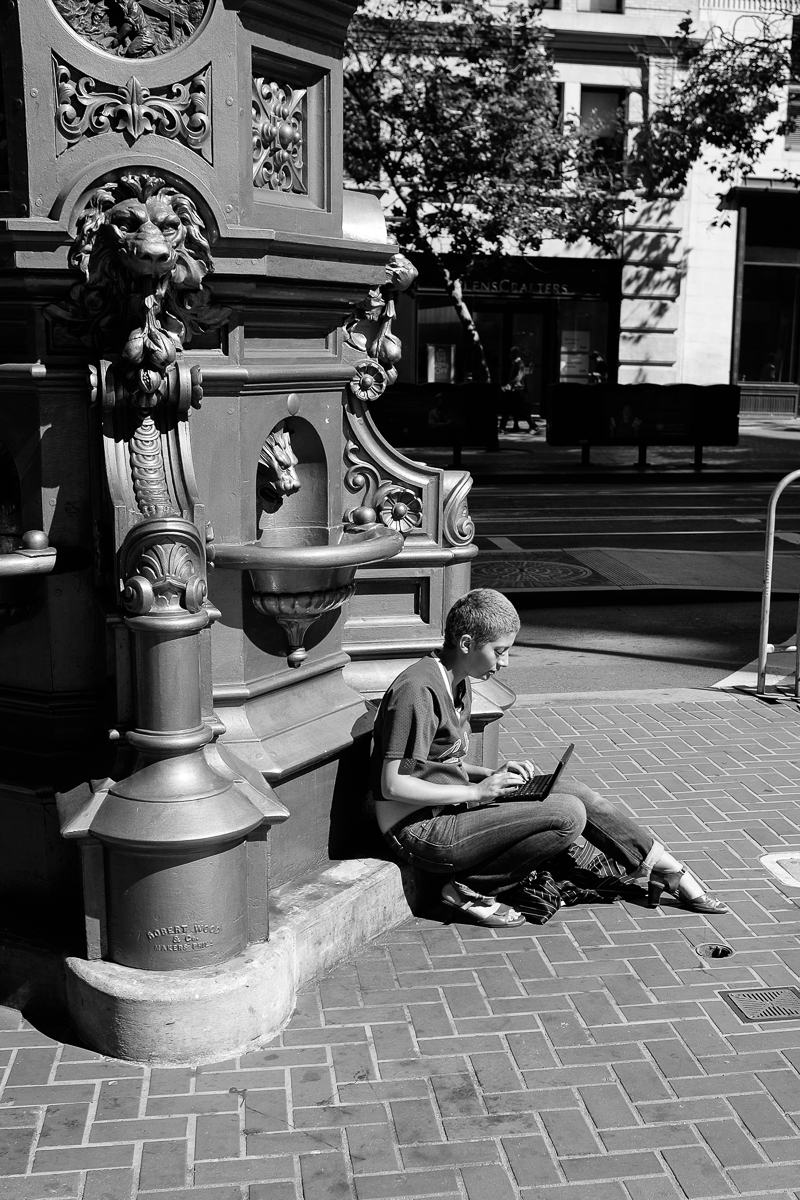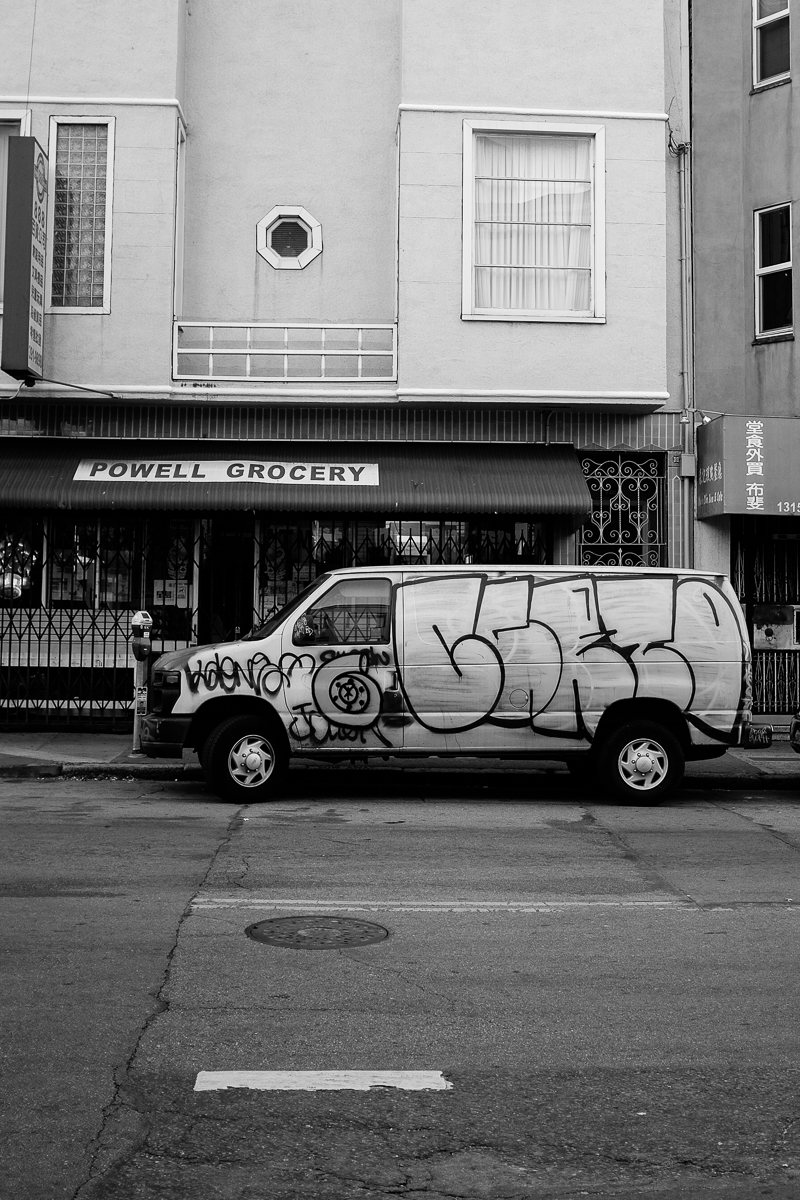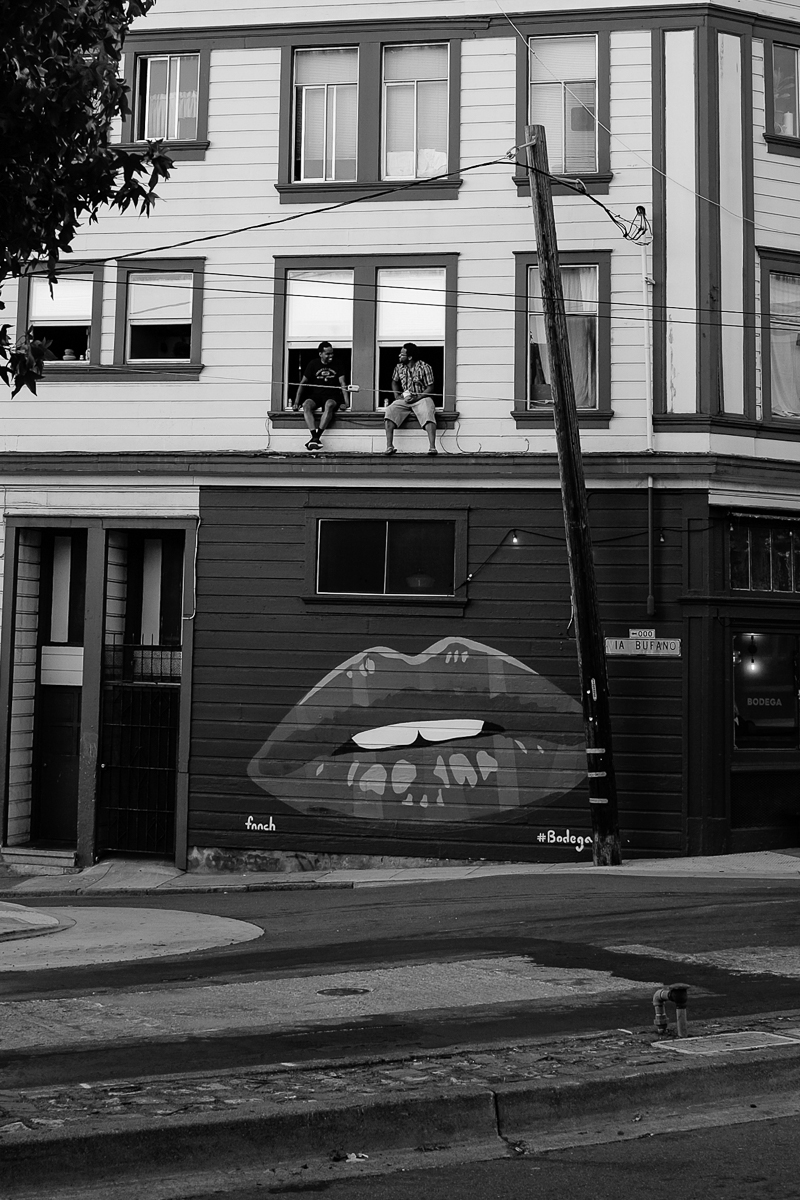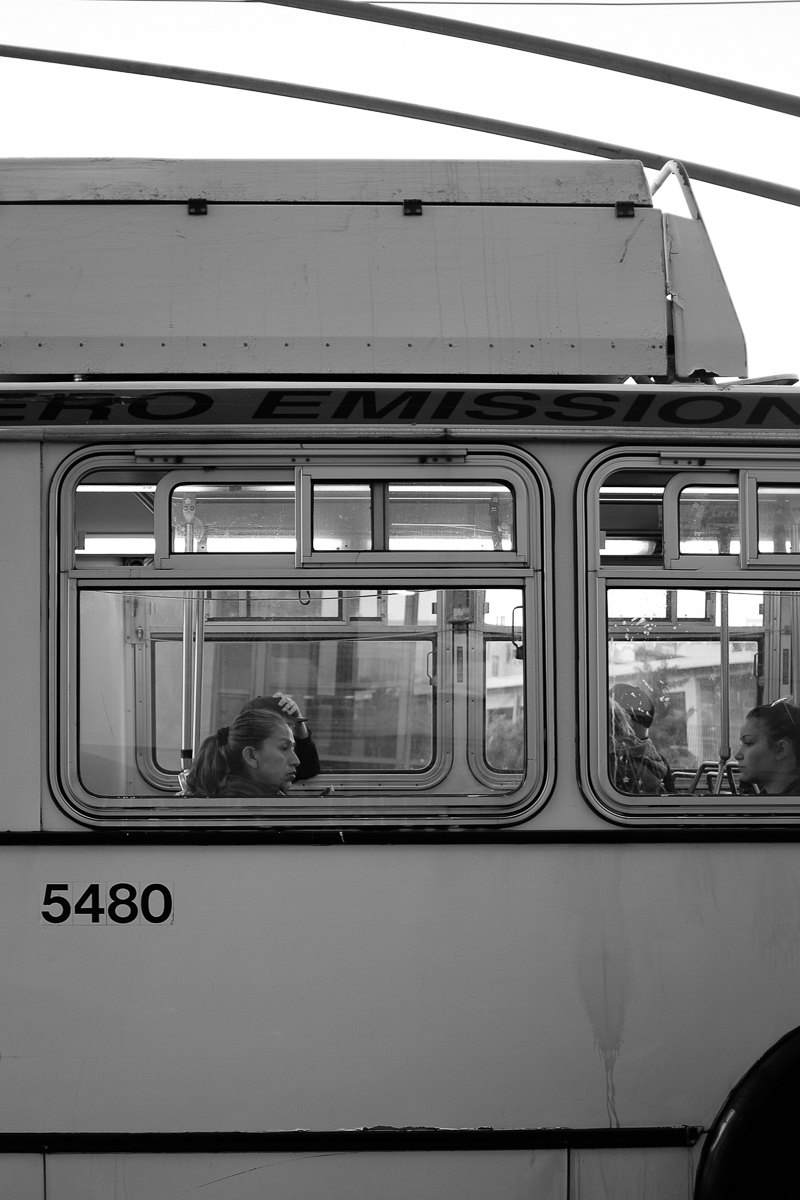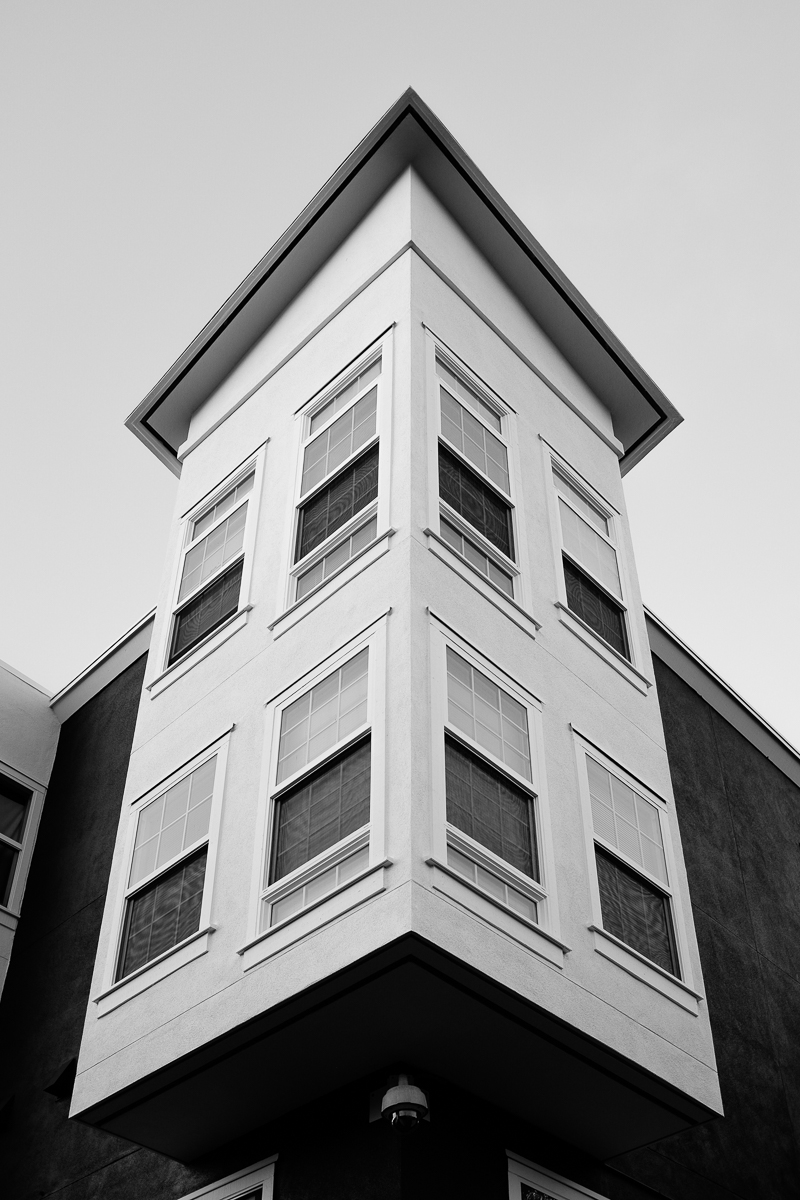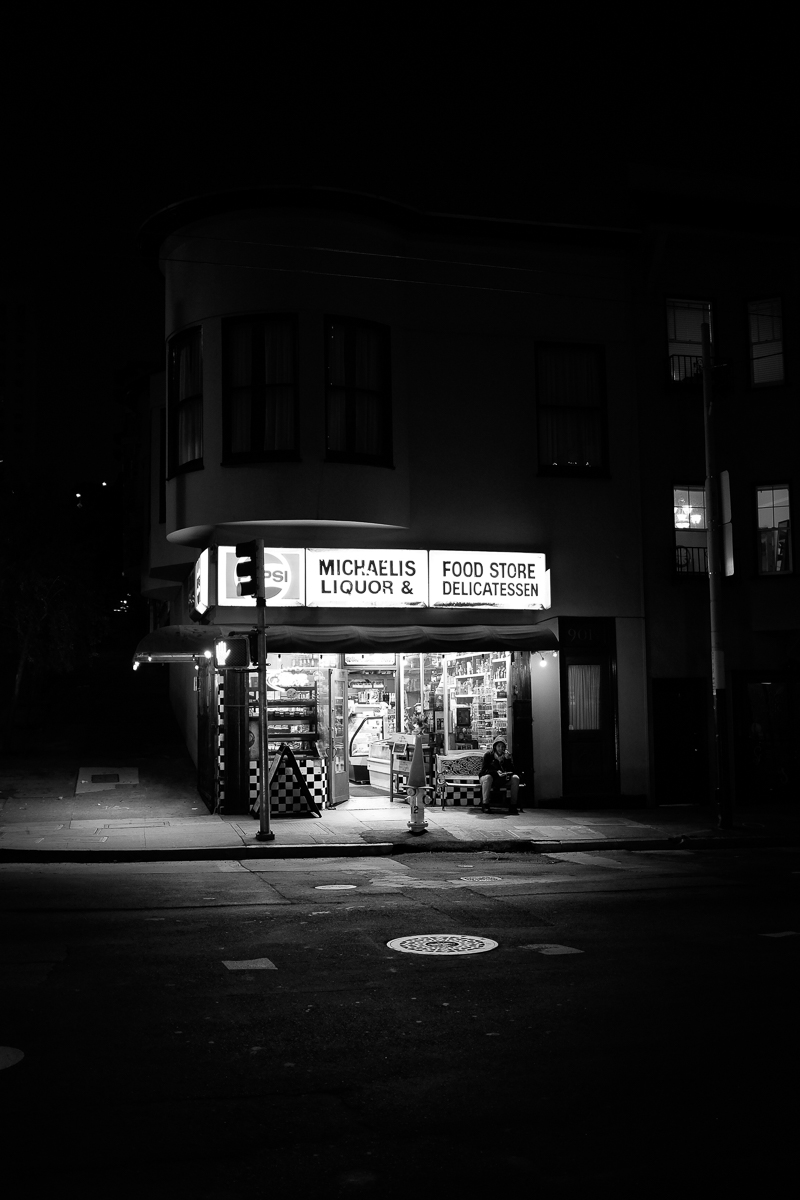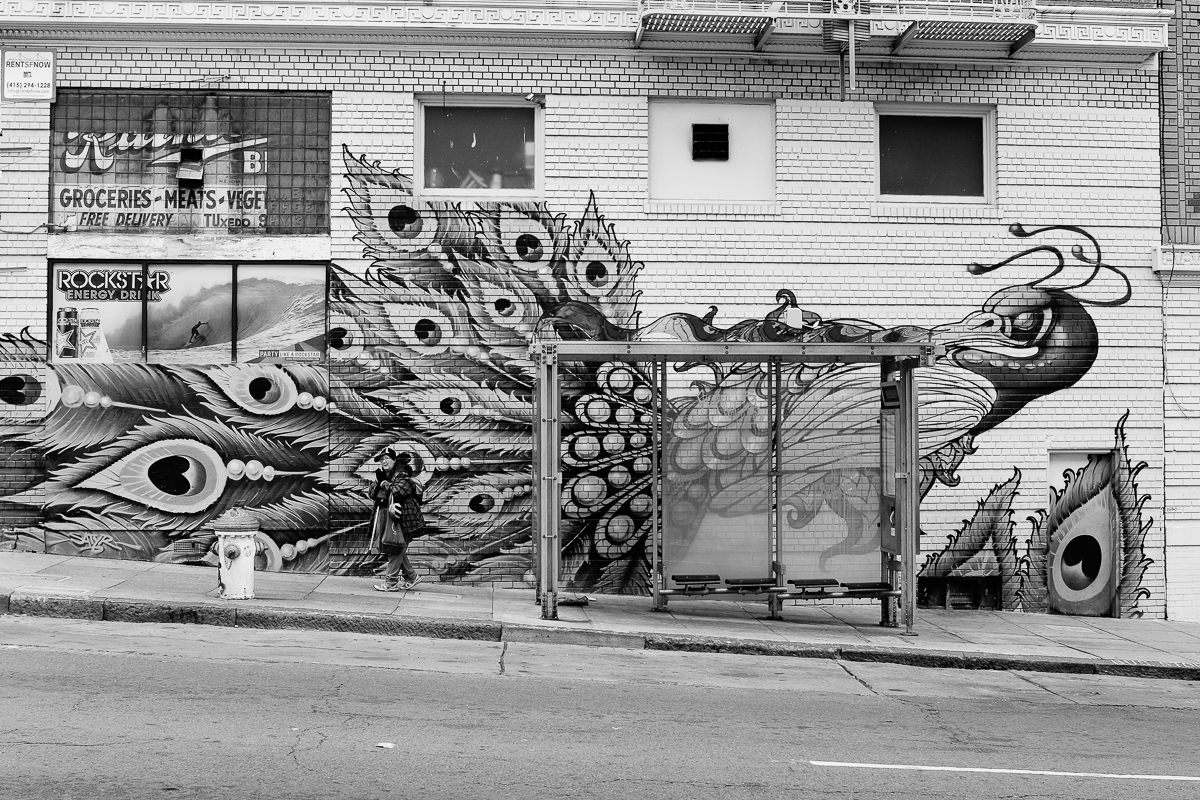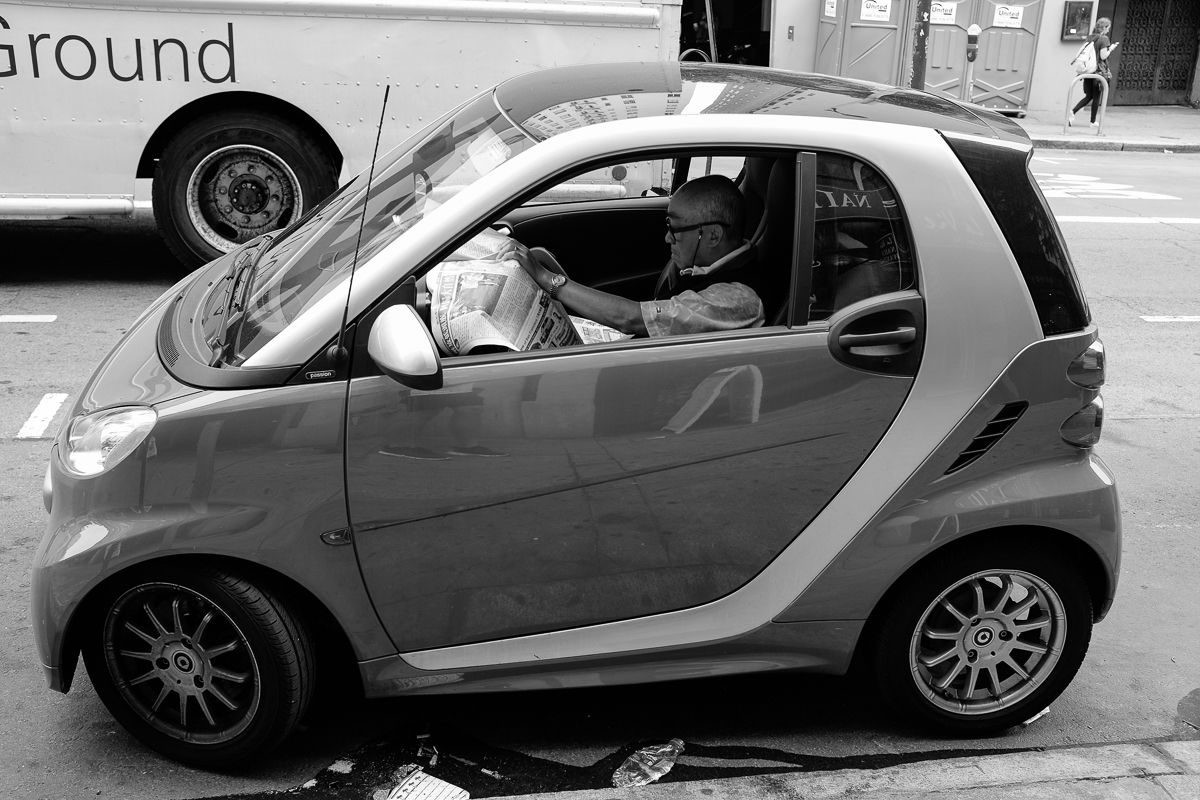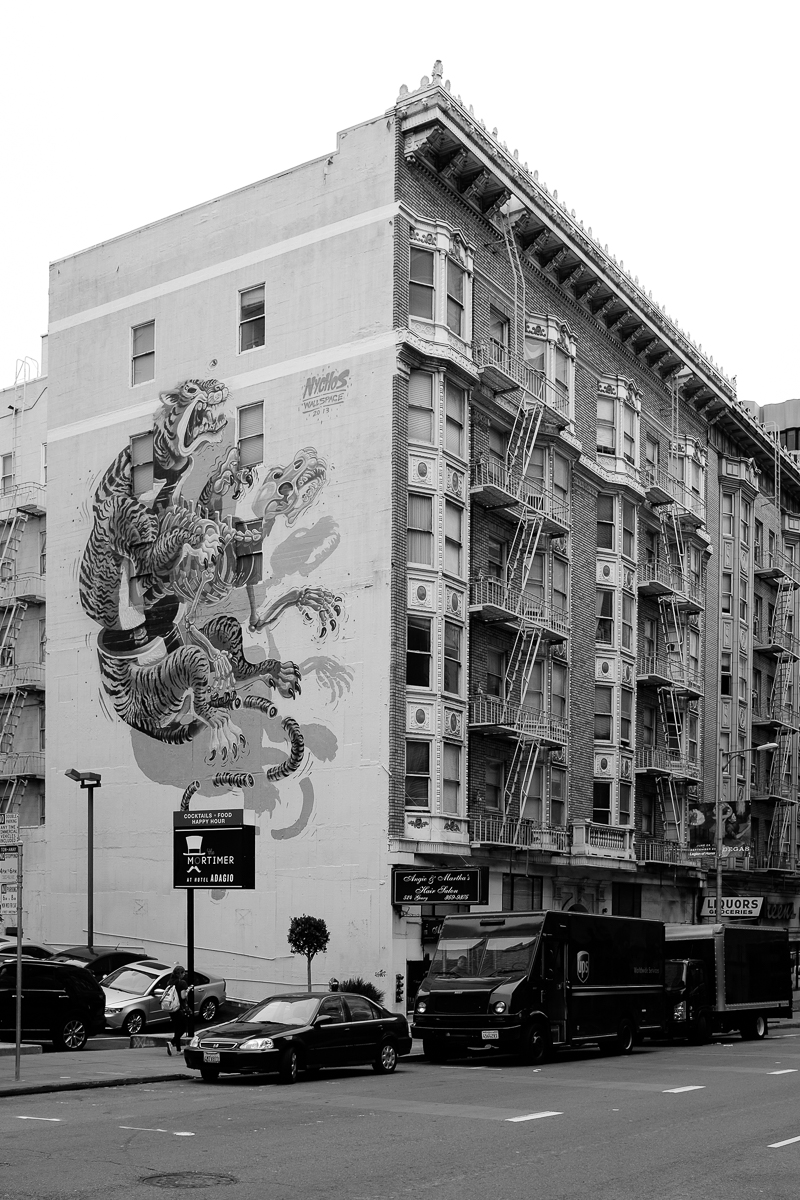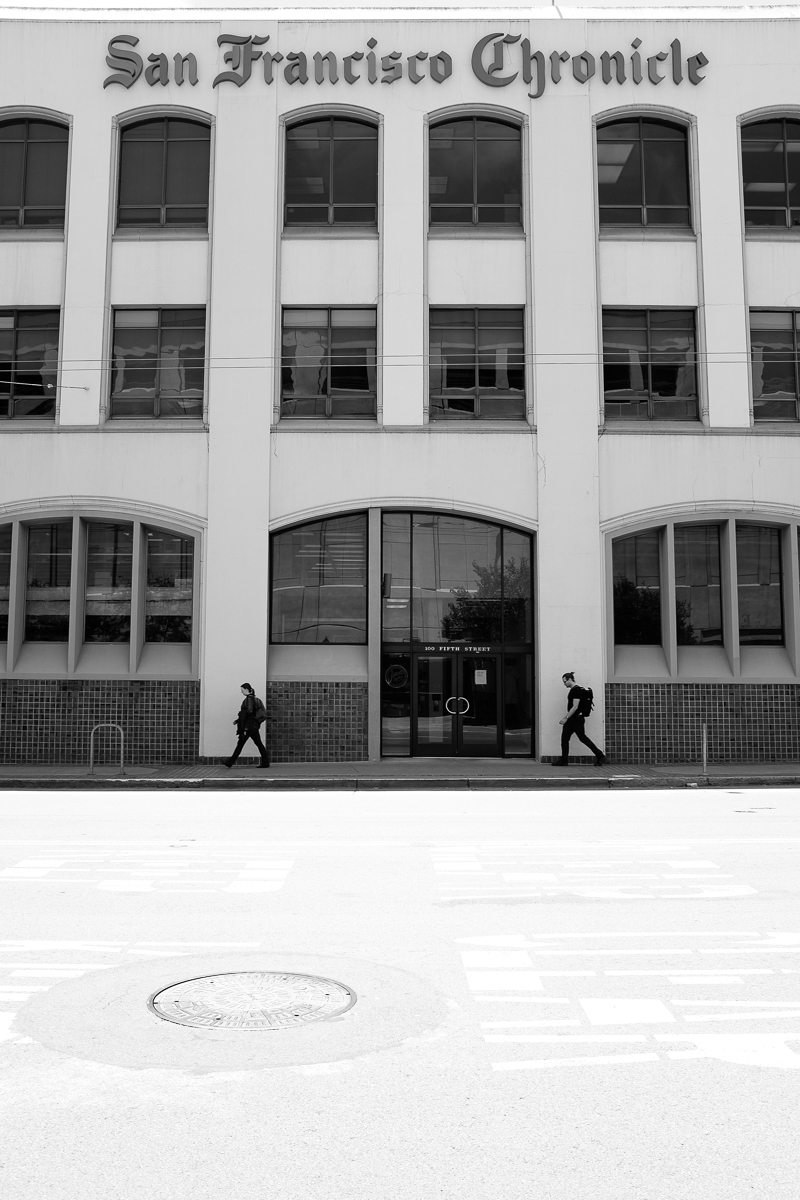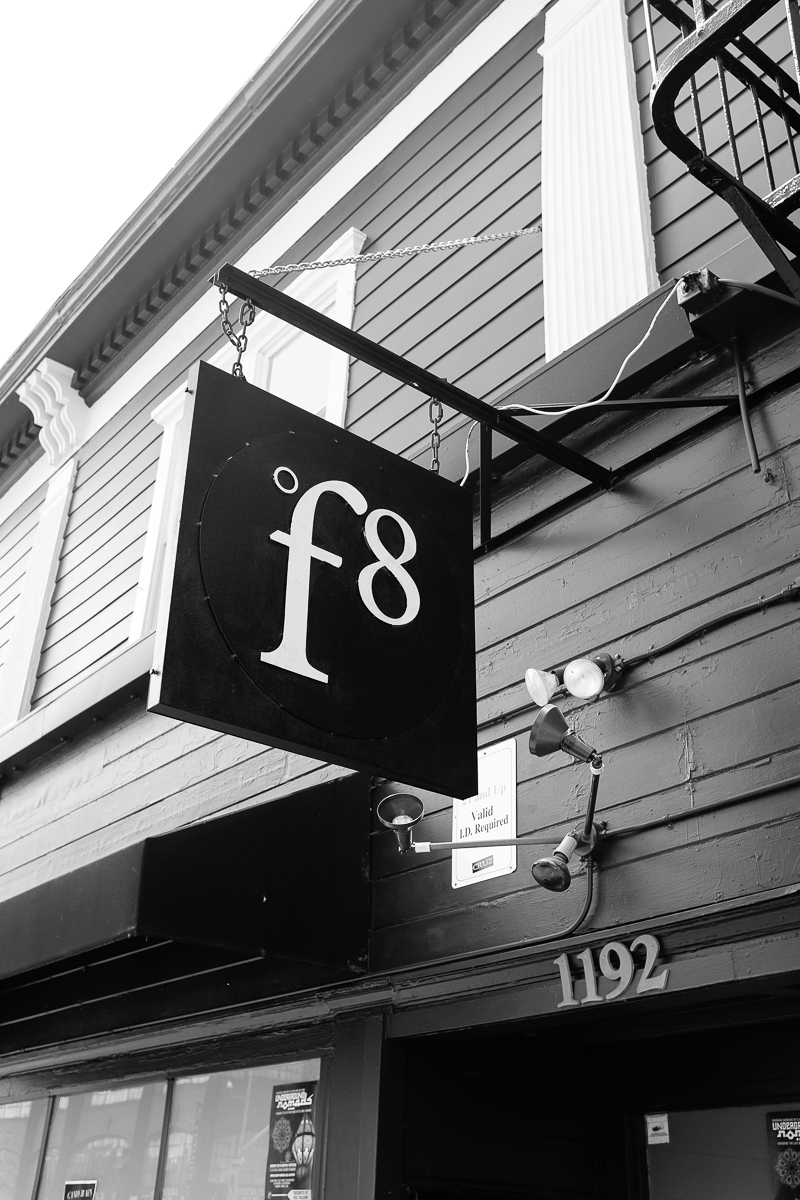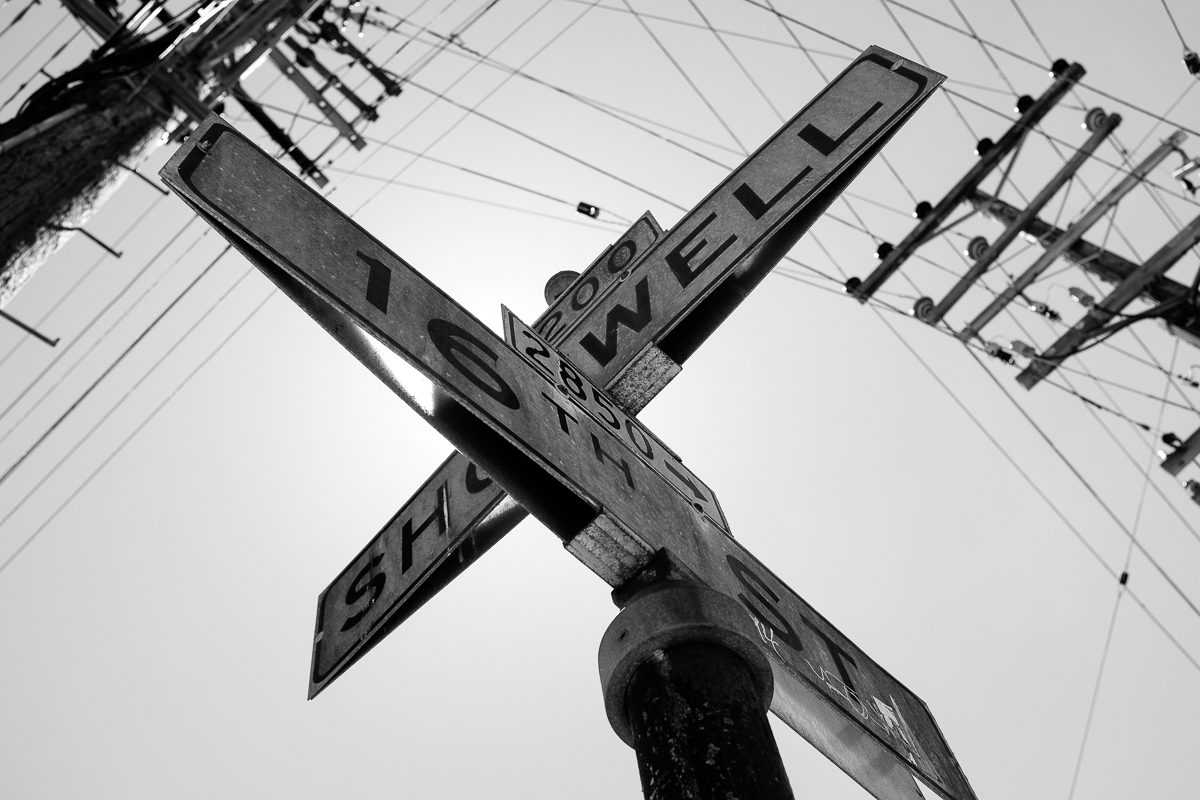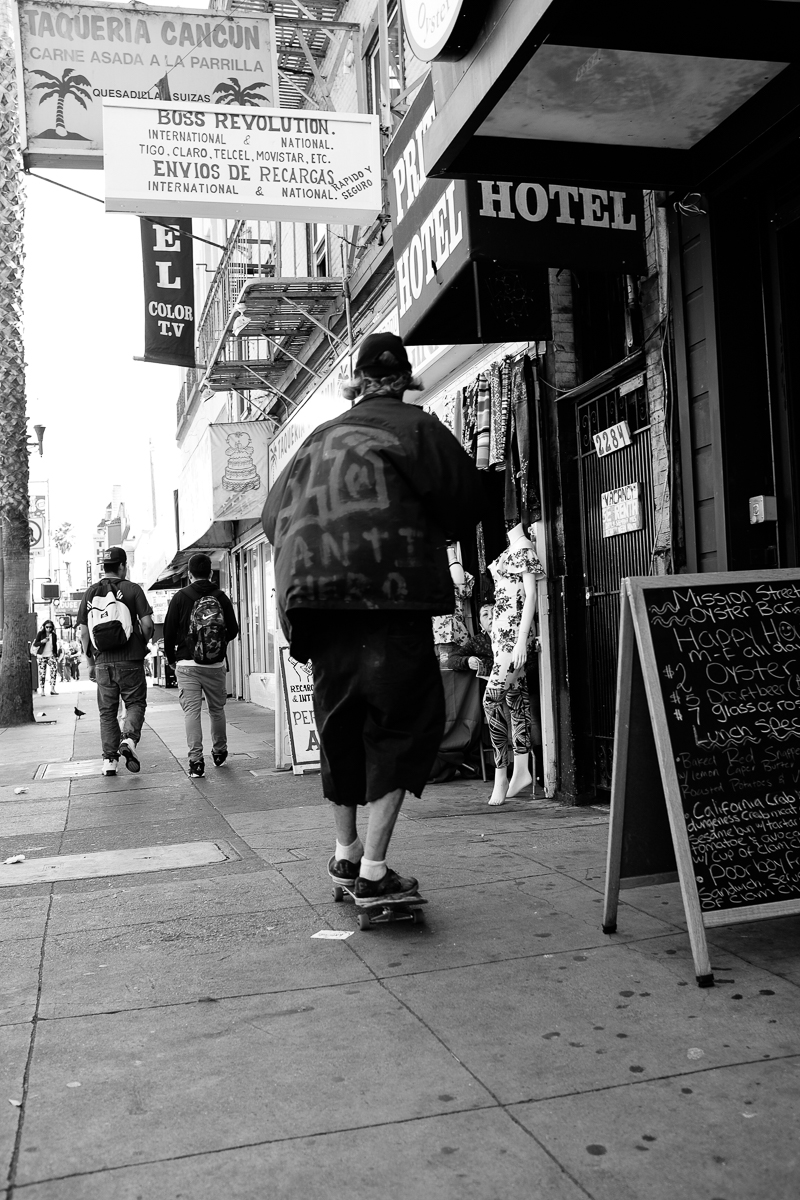This is a personal reflection on my own practice of making candid photographs as well as a few tips, techniques and good practices that could be helpful to anyone with a camera wanting to go out and make candid portraits of their own.
I made these photographs on a family holiday in Sri Lanka and the ways I approached making them I have learned from observing other photographers and put into practice while walking around with a camera.
What follows is not a guide it’s just me showing you what I have made and either how I made it, what I was trying to do, or how I approached a scene. I hope that in reading this you will come across something that you find useful or interesting. Feel free to leave a question or a comment below.
Wake up early. The areas we know and see going about our daily lives often look very different after breakfast or long after dinner time. In the photograph above the cyclist is passing in front of a closed storefront. If I had made this photograph after 8am the scene would have been different in many ways. The store would be open, and that additional detail would be distracting. The low, warm angular light spilling down the street would have been replaced by a harder, brighter, whiter light that would have fallen at a 45 degree angle. And of course the street would be filled with cars, busses and commuters moving through the frame.
No matter what you are doing or where you are make a mental note of any location that you think might make for a good photograph. What time of day would the scene come alive or experience the best light? What type of equipment do you need to get the shot? For the image (above) I had heard the train rolling by from where we were staying and I made a mental note to check it out. On a family walk I found that there was a dirt road crossing at the end of the street. I decided to return the next morning when the light was better.
If you have a family, especially when you’re on holiday, consider separating your family time and more serious photography time. If you’re anything like me you will have trouble being present with your family if you are constantly looking for the next photograph. Make a mental note, make a plan, wake up early, get the shot, meet up for a late breakfast. (Unless of course you are a master at balancing your time and are able to engage fully with your family/companions and capture scenes at the same time).
Planning for the photograph of the train (a fairly mediocre image) lead me to this Image 5 minutes later on a walk along the railway tracks. Having a plan, a few potential locations to explore and even a rough route to take before you set out can be helpful as your mind is free to focus on what is happening around you and not looking at a phone or a guide.
Something to be aware of: making candid photographs of strangers often divides people, and for good reason. Some say that the more candid the approach to making a portrait the more intrusive or even exploitative it is. And I agree. Pointing a camera at someone will often raise an eyebrow and cause some apprehension, especially when the photographer or the photographers intentions are unknown. As image makers, travellers or image consumers we have to be mindful of this. Isn’t it unfair and impolite to take without asking?
So why do photographers make candid images of people? Often to capture a beautiful moment that they would not be able to make if the person was aware of the camera. The authenticity of the moment is often destroyed by this intrusion and while there is an art to being fast and unobtrusive, I think it’s best to show the photograph to the subject and to ask their permission.
In the photograph above the gentleman stopped at a small kiosk just left of frame.
To be completely honest I haven’t always used this approach and I have taken candid photographs of people without asking, but I am trying to move toward this approach and I feel more confident sharing images captured in this way.
Be mindful of your body language and the body language of the people around you. If you approach people or even enter a space feeling uncertain or apprehensive this will show and it’s only natural for people to react to you in a guarded, apprehensive way. Try to be open to people and ready to share your images or to chat with people. In Sri Lanka people asked me where I was from and I always tried to use this as an icebreaker to show interest in what they were doing, or an appreciation of their beloved national sport: cricket.
If you find that people react when you raise the camera to your eye you can use this as an opportunity to ask rather than to press the shutter release. What’s the worst that can happen? They can only say no.
Be polite and respectful of people’s space. If you are entering a space where people work try to stay out of the way. In wet markets the ground is wet and slippery. Try to anticipate what you might see in the locations you plan to visit and avoid any areas that make you too uncomfortable or squeamish. In addition you’ll never regret wearing a good pair of shoes because you never know what you’ll encounter, or how long you are going to be on your feet..
Be deliberate with your framing. Exclude any irrelevant details that do not add to your story. If possible wait for actions or interactions to unfold and raise your camera to your eye just before they happen.
Try to put yourself in situations where interesting things (whatever you find interesting) are happening all around you. And as I mentioned, think about the best time to visit, what is going to make for an interesting image? Perhaps something unusual or out of place? Or experiment with framing and positioning yourself until you make an image that has a purpose, captures a mood, an expression, or tells a story.
Be mindful of the effect of your lens choice. A wide angle lens (above) will exaggerate the scale of the scene making nearer objects appear bigger and make people even feet away from the foreground appear further away than they are. Try to fill your frame with the story or action that you intend to show and try to leave everything else outside of the frame. With wide angle lenses you generally need to get closer to the action or subject to make them prominent in the frame. With normal or longer lenses it may be easier to create tighter, cleaner compositions and if your lens doesn’t zoom: move your feet.
When photographing people try to get eye level with them. With a medium lens like a 50mm this will give just enough context and allow for a little negative space around the subject. In most cases with a portrait you want to show the subject as close to the way they appear in everyday life. People speak to one another at eye level and generally look each other in the eye.
For more stylised or emotive portraits you may want to get closer or to experiment with more unusual angles. I generally try to have the subjects eyes in the centre of the frame and two-thirds of the way up the frame.
Always focus on the eyes and make sure you have a tack-sharp image before you move off. This may involve zooming in on the eyes afterward to check that they are sharp.
Catchlights (the highlights or specks of bright light reflected in the pupil or iris of the eyes) are often very important in making a good portrait. The catchlights give the eyes depth and add a sort of spark or life to the eyes.
I came across this man while he was burning dried leaves. His wife and two sons live across the road, and while we could not communicate on a deep level I asked to make this portrait of him and later discovered via his son’s translation that the family run a large guest house and surf school while their father works as a tuk-tuk driver in Colombo. He was proud of his work and his tuk-tuk, he’s been a driver for 30 years. I’m not sure if this image captures him well but he is incredibly strong and fit for 71.
A few general portrait tips:
Try to position your subject’s body at a slight angle - it adds depth and is usually more flattering.
It’s often helpful to demonstrate the way you want your subject to stand or sit rather than trying to physically move them or repeating your directions.
When shooting in areas with strong sunlight - try to keep your subject in the shade and protect your highlights by underexposing slightly. Shoot RAW files: the flexibility will allow you to recover the shadows. Note that you cannot always recover the highlights if they are blown (overexposed). Check your histogram.
Make the portrait a positive experience for the subject - be polite, thank them for their time, share the image immediately after making it.
Consider posing the hands. Hands are interesting and can say alot about the person or be distracting. If your subject’s arms are hanging loose it may look awkward. Have them put their hands in their pockets, set their elbows down on a table, or have them cross their hands or arms.
Be aware of the hands, arms and feet in your frame. Try not to crop the fingers or feet - it usually looks better to place the frame above the elbow, and above the knees, if you have to.
Try to work quickly - don’t keep your subject waiting otherwise the energy and the life in their expression may fade.
Be aware of your background - a background may make or break a portrait. Try to position yourself so that the subject is between you and a pleasing background. Consider whether the background adds context or interest to the frame or whether it distracts the viewer.
If you like the background go a step further after taking your first frame. Is there a better composition using this background? Where can you position yourself to take advantage of this? It may be worth your time to stand and wait for something to happen in this light, or against this backdrop.
Consider the light. Position yourself to create more depth or to include any interesting shadows. Creating depth and accentuating the shape of an object (like the wooden box or the bicycle above) can be achieved by including and positioning shadows relative to your subject. Focus attention on your subject by photographing it (or him or her) on a darker background, or move yourself to place shadows (cast by the subject or something else) behind your subject to act as a sort of background to increase the contrast in that area, to make the area more 3 dimensional, or to ‘make it pop out’ of the background.
When I come across a subject that I like (this gentleman above wearing a white robe, for instance) I try to position the light colours against a darker background (the darker trees in this case). This helps the form of the man to stand out from the background. In this case photographing the man from the front would have given me beautiful highlights on the right side of his face and shadows on the left, accentuating the shape of his face, however, I chose not to disturb him and used the lighthouse and sky as a background.
If the gentleman had been wearing a black suit, for example, I could have used the sky, the sea, or the lighthouse, as lighter backgrounds to separate him and create depth.
Choose a scene that you like and wait for an interesting subject to pass through it. Decide on your framing and your position and then look left and right for approaching people. Ideally you want to choose a subject before they enter your frame and then raise your camera a few seconds before they enter it. Try to decide beforehand where you want the subject to be in the frame when you capture it. Be patient - it may take a while. Make sure your settings are correct. If you are trying to freeze motion make sure your shutter speed is fast enough.
Look for frames within a frame, beams of light, colours or shapes, motifs that help to draw attention to your subject.
Go where the people are and look for interesting compositions and juxtapositions. Look for interesting things happening in otherwise arbitrary places.
Make bad pictures. Walk around and photograph anything that moves you. (not just anything that moves). When we photograph we are bringing with us our experiences, memories, knowledge and a whole host of other influences. I think in order to tap into this self, or this intuition, you need to trust your gut. For this to work try not to be too critical of yourself, and if you find yourself snapping away think, what is it that drew me to this? Is there any way I can capture it better? Is this location worth revisiting? etc
In this type of exercise it can be helpful to use a digital camera and to automate as many of the functions as possible. Try using P mode while you walk from one location to another, allow the camera to control as many operations as you are comfortable with (focus, ISO, exposure) and then just react freely. If you happen upon something truly great fire off one or two frames and then review your settings. If the settings are not optimal for what you are trying to achieve then change them.
This exercise is not helpful when you have a good idea of what you are looking for and you know how you want to capture it: it’s for when you’re ‘hoping for something unexpected’ or when you’re ‘making you own luck,’ rather than waiting to accidentally get lucky.
Doing the opposite can be even more rewarding. Revisiting a location and looking for something that you know is going to happen, with settings and equipment that you have had success with in the past.
Get creative. Creativity for me is the freedom to experiment without the fear of failure. It’s time to play and to be open to whatever happens. It’s completely natural to expect results or to set the bar high for yourself when you have been making photographs for years, but thinking this way doesn’t necessarily lead to new or even better work. For me creativity is something you nurture and practice and in doing so develop. Pressure and the fear of failure will inhibit the freedom to create and to fail.
Practicing being creative and reacting intuitively is not a waste of time. Even if you are a wedding photographer, honing your skills on the street may help you to react quickly and to problem solve when you come across difficult subjects, unforgiving weather, shitty people, or harsh light.
Fail often. One of my favourite quotes by Stephen McCranie “The master has failed more times than the beginner has even tried.” Failure itself can be a lesson but we need to learn not to repeat the same mistake or be discouraged from going out and trying again. Then repeating this process until this becomes comfortable and you need to push yourself even further to get out of your comfort zone to learn again.


















